A Red-winged Blackbird calling with its mouth full. We’ve all gotten call from friends who are eating lunch.
I haven’t seen a another fake bird around here since they put out the trio of fake owls.

A Red-winged Blackbird calling with its mouth full. We’ve all gotten call from friends who are eating lunch.

I haven’t seen a another fake bird around here since they put out the trio of fake owls.
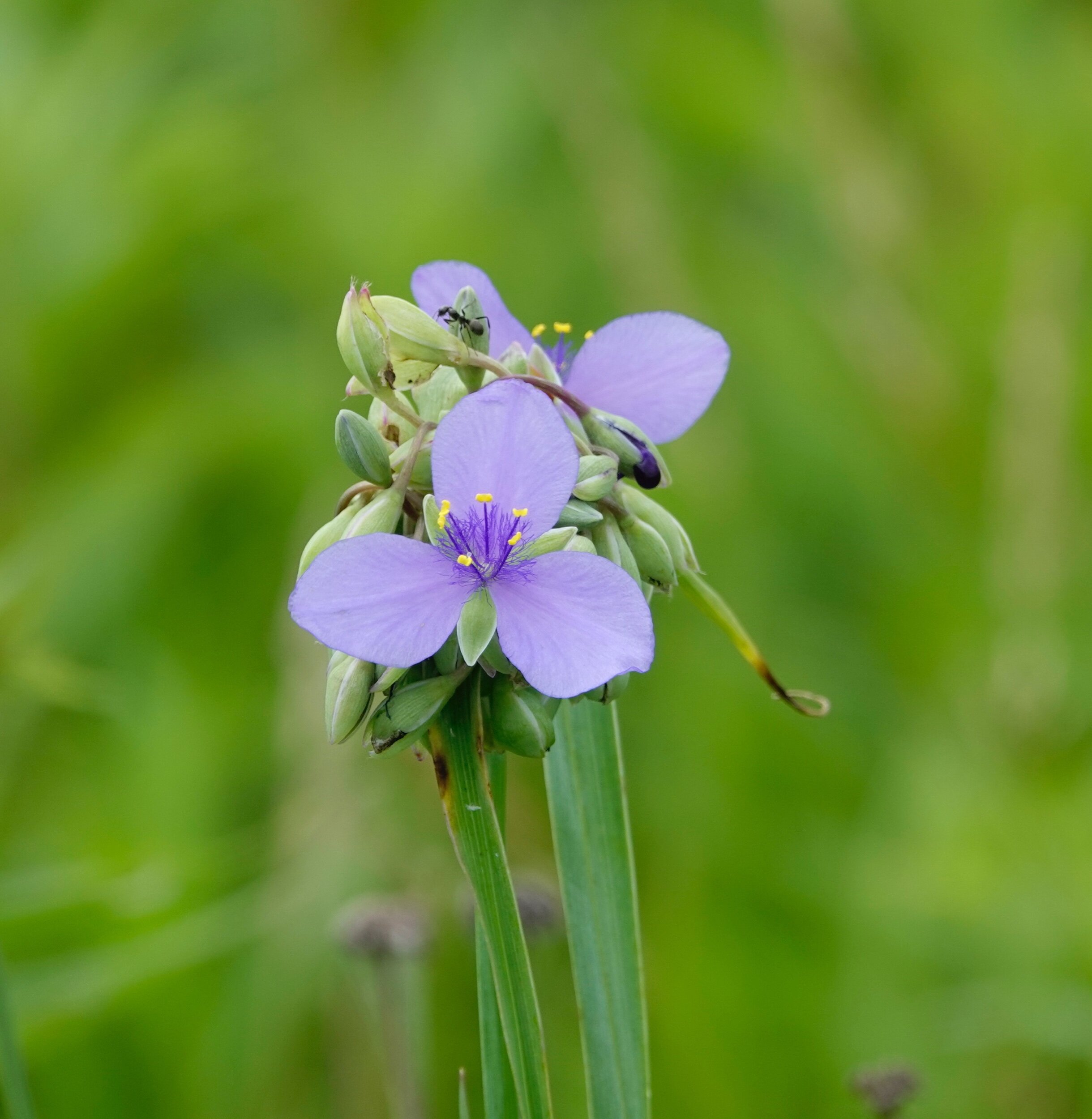
The petals of spiderwort last only one day, opening in the morning then turning to jelly in the mid-day heat.

Resembling a big sparrow and a little meadowlark, the Dickcissel is a familiar voice.

Resembling a big sparrow and a little meadowlark, the Dickcissel is a familiar voice.

The Eastern Kingbird (Tyrannus tyrannus) is the king of my birdyard.

A young robin dips his toes in a new day.

Young Baltimore Orioles can be demanding when it comes to grape jelly.

The Ebony Jewelwing is a dandy damselfly.
Ditch lily, ditch lily, give me your hand
Naturally
June brought greening and growing. As sung in “Carousel,” “June is busting out all over.”
Bird is the word
I watched a kestrel take a house sparrow from a roadside. Young starlings have a grey-brown plumage. Cuckoos called. These rain crows feed on tent caterpillars.
There are over 800 whooping cranes in the world. I’ve been fortunate enough to have seen them in four local counties as they moved through.
I’ve rescued loon, eagles, hawks, pelicans, herons, owls, ducks, vultures, geese, kestrels, a bittern, a swan and more. They weren’t appreciative as I haven’t received a single thank you note from any of them.
Ditch lily
Baneberry, blue-eyed grass and birdsfoot trefoil bloomed as do the clovers—white or Dutch, red, and yellow hop or golden.
Thick shoots called candles appeared at the terminal ends of pine branches.
The ditch lily, sometimes called an outhouse lily, is a vigorous orange-flowered daylily that finds home in our road ditches. When I spot them, I sing a corrupted Beach Boys song, “Ditch lily, ditch lily, give me your hand. Give me something that I can remember.”
Crepuscular critters
I was late getting home and didn’t take in the hummingbird feeder before a raccoon had taken it down for me. The raccoon removed all six of the tiny, plastic, yellow flowers from their cavities and slurped down the sweet water. A deer towered over the corn rows. Deer are crepuscular, active in the twilight of dawn and dusk.
Spittlebugs
If you want to see an insect, look at a flower. Butterflies included: monarchs, tiger swallowtails, blues, sulphurs, skippers, black swallowtails, fritillaries, cabbage whites and crescents. The swallowtails are our largest butterflies here, but the largest, the giant swallowtail, is uncommon. June is the time for the big moths. The spotted, light brown Polyphemus is named after Polyphemus, the giant cyclops from Greek mythology who had a single large, round eye in the middle of his forehead because of the large eyespots in the middle of the moth’s hind wings. It has a 4-5 inch wingspan. Cecropia has a 5-6 inch wingspan and is reddish-brown. And the luna moth is green with a 3-5 inch wingspan.
Spittlebugs have a protective covering resembling soap suds or spit on a plant. It looks as if a baseball team had been there.
Hot, dry summers make for large populations of boxelder bugs in the fall. Those insects are most abundant in years when May is warm and July is dry. Dawn liquid soap in water is an effective spray to use on the harmless bugs if you find them annoying.
The mosquitoes bothered me as I gathered raspberries. My memory told me I notice the first big batch of mosquitoes around Memorial Day each year.
Ebony jewelwings are beautiful damselflies. In good light they appear a bright metallic green or teal blue depending on the angle of light. They appear black in shade.
Bald-faced hornets build the iconic gray, football-shaped nests in trees. A neighbor called them bull wasps and they’re prolific eaters of deer flies and horseflies.
Those rascally rabbits
A farmer’s market vendor told me apple cider vinegar discourages rabbits. Soak items (corncobs or rags work well) in vinegar for a few minutes and place them around the garden. Resoak every week. Or fill a spray bottle with half water and half vinegar. Apple cider vinegar is also effective at repelling ants.
Q&A
“Why do birds roll around in the dirt?” Birds take dirt baths because the abrasive particles in the dust clean feathers and remove lice and parasites. Birds roll about loose sand or dust and shake vigorously. The sand and dust absorb excess preen oil and remove dry skin. Dust bathing leaves bowl-shaped hollows on the ground. It’s soap and water without the soap and water.
Tom Belshan of Glenville asked about cormorants. John Milton, in “Paradise Lost,” described Satan as having “sat like a cormorant” on the Tree of Life, plotting the downfall of Adam and Eve. Despite the bad press, cormorants have benefited from the banning of DDT. Studies found 90% of the fish they consume are 5.3 inches or less in length and weigh an average of 4.2 ounces. They dive 5-25 feet for 30-70 seconds and could be a problem in baitfish ponds. They prefer an adequate food supply within a mile, but will fly a dozen miles for food.
Moron nature
To get more on nature from a nature moron, go to my blog at https://www.albatt.com/blogs/ Or listen in every Tuesday to KMSU (89.7 FM) or KTOE (1420 AM) aired on various dates. All radio shows are online.
Thanks for stopping by
“A lie gets halfway around the world before the truth has a chance to get its pants on.”—Winston Churchill
“The Panama Canal was dug with a microscope.”—Ronald Ross (alluding to mosquito research)
Do good.
©Al Batt 2021

Ditch lily or outhouse lily.

The baby robins came out of the blue—blue eggs, that is. Photo by Al Batt

I watched Red-winged Blackbirds mobbing a Turkey Vulture that made the mistake of flying over a marsh. It was a harsh marsh for the TUVU.

The Brown Thrasher and I decided not to shave today.

In our barn, the House Sparrow chirped while I worked. I enjoyed his cheerful company.
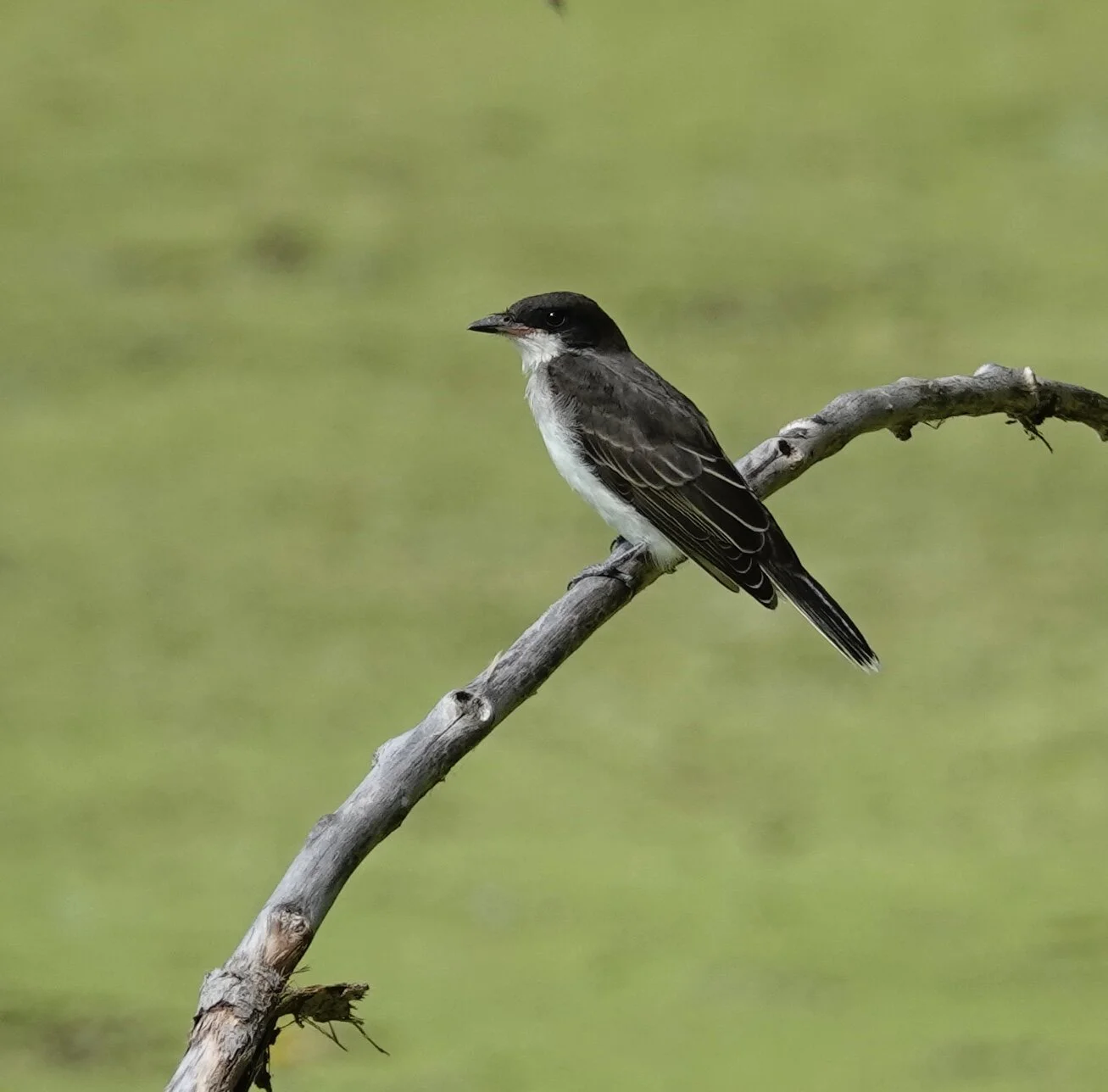
An Eastern Kingbird is more enticing than a carrot on a stick to a birder.
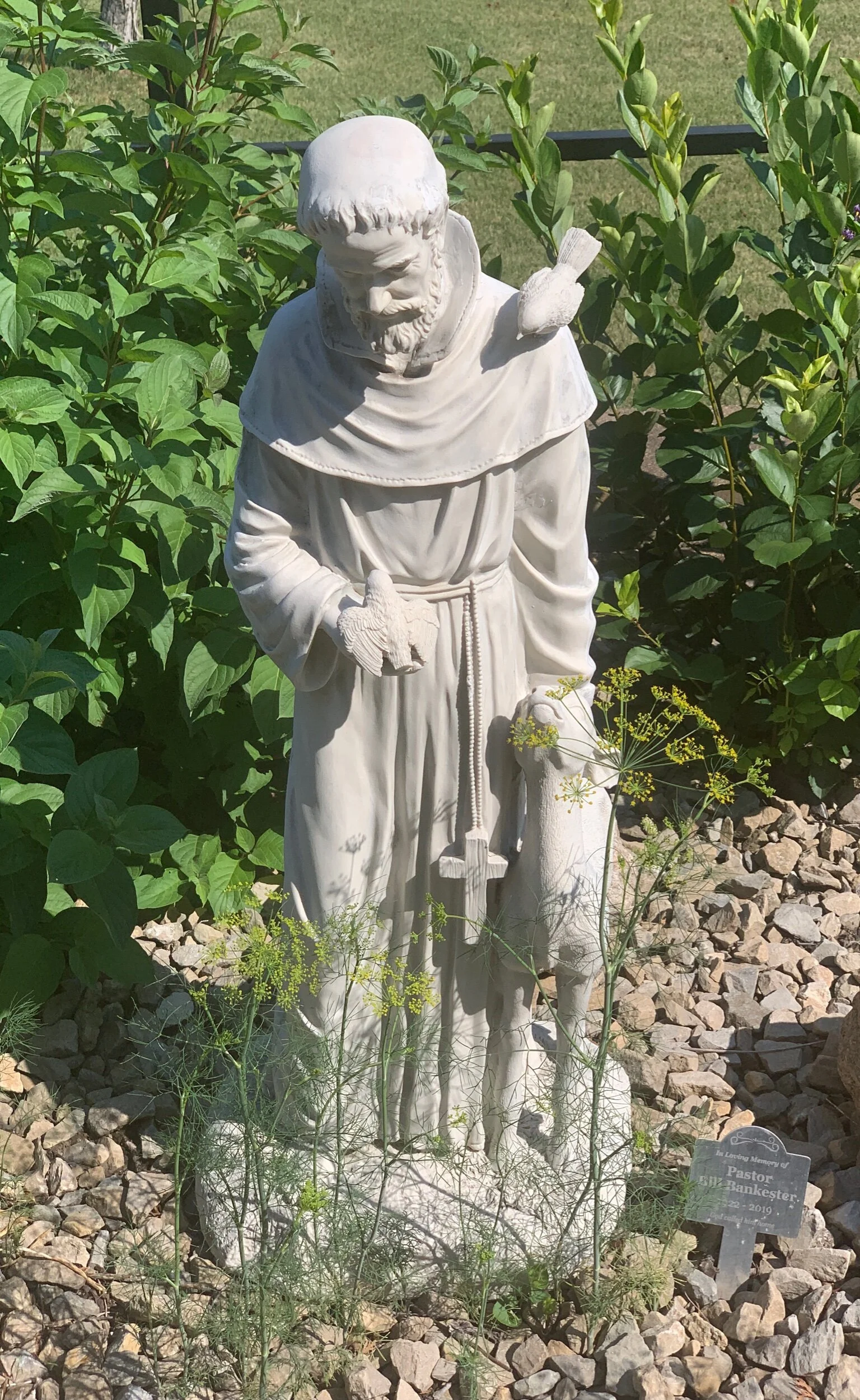
St. Francis of Assisi and friends examine dill. I love this statue and knew the fine man whose memory it honors at the New Richland Care Center.
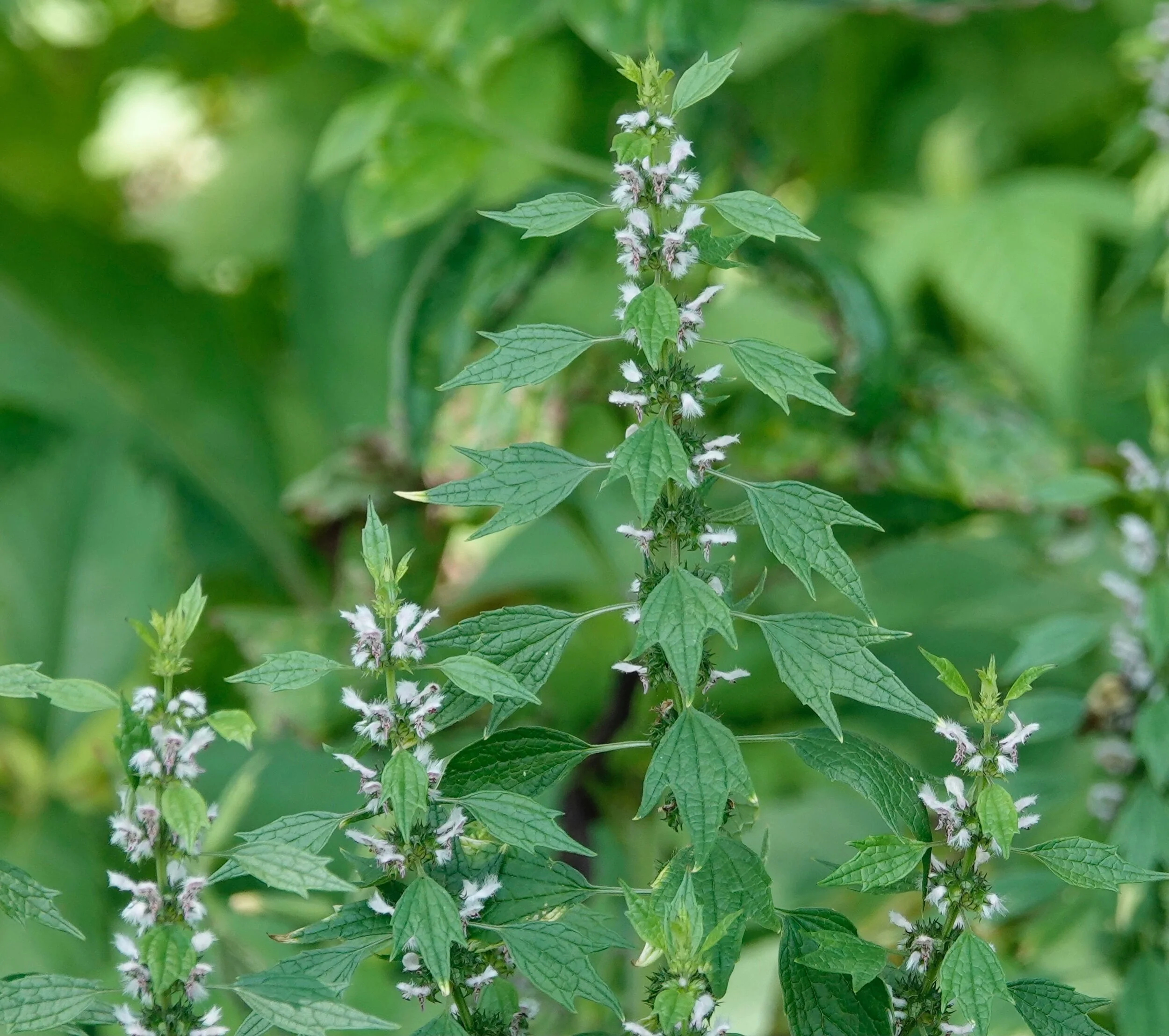
Motherwort.

A Common Yellowthroat fought the lawn and the lawn won.

The Brown Thrashers went out on a limb for me.

A Gray Catbird enjoys suet.
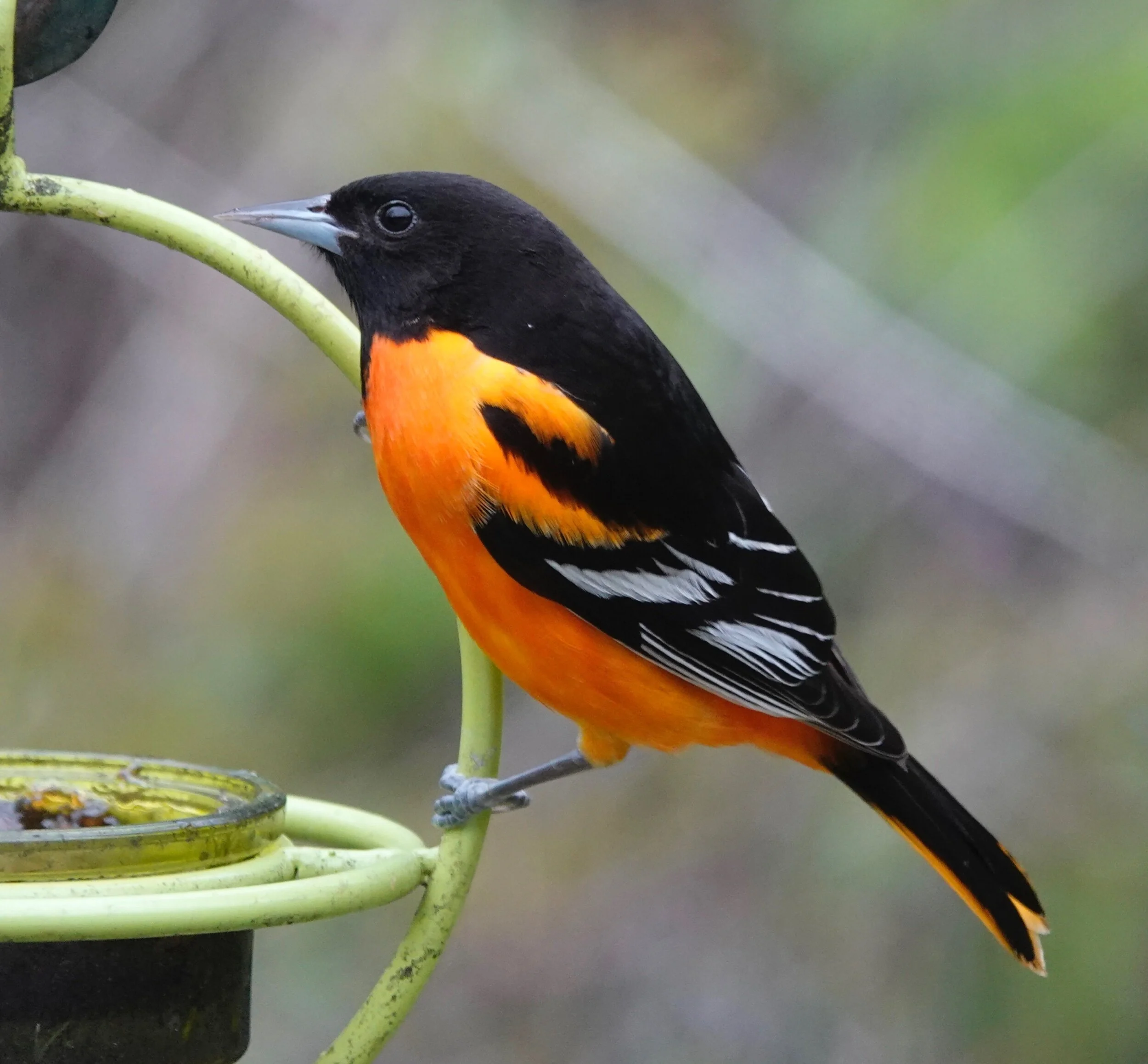
This Baltimore Oriole enjoyed a bit of the grape. I enjoyed seeing this Baltimore Oriole enjoy a bit of the grape.
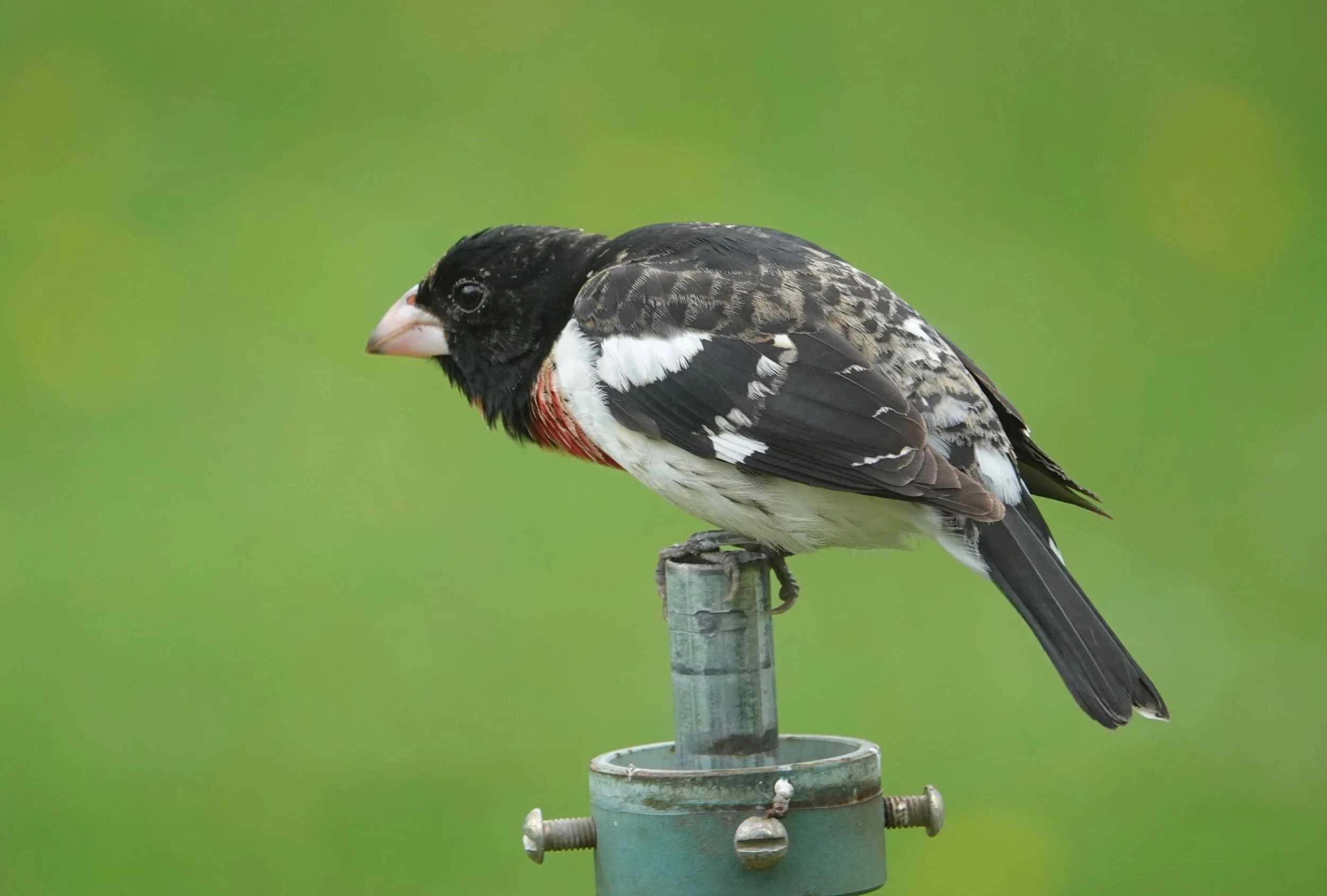
This Rose-breasted Grosbeak was wondering where the old feeder had gone. It had fallen victim to a fallen limb.
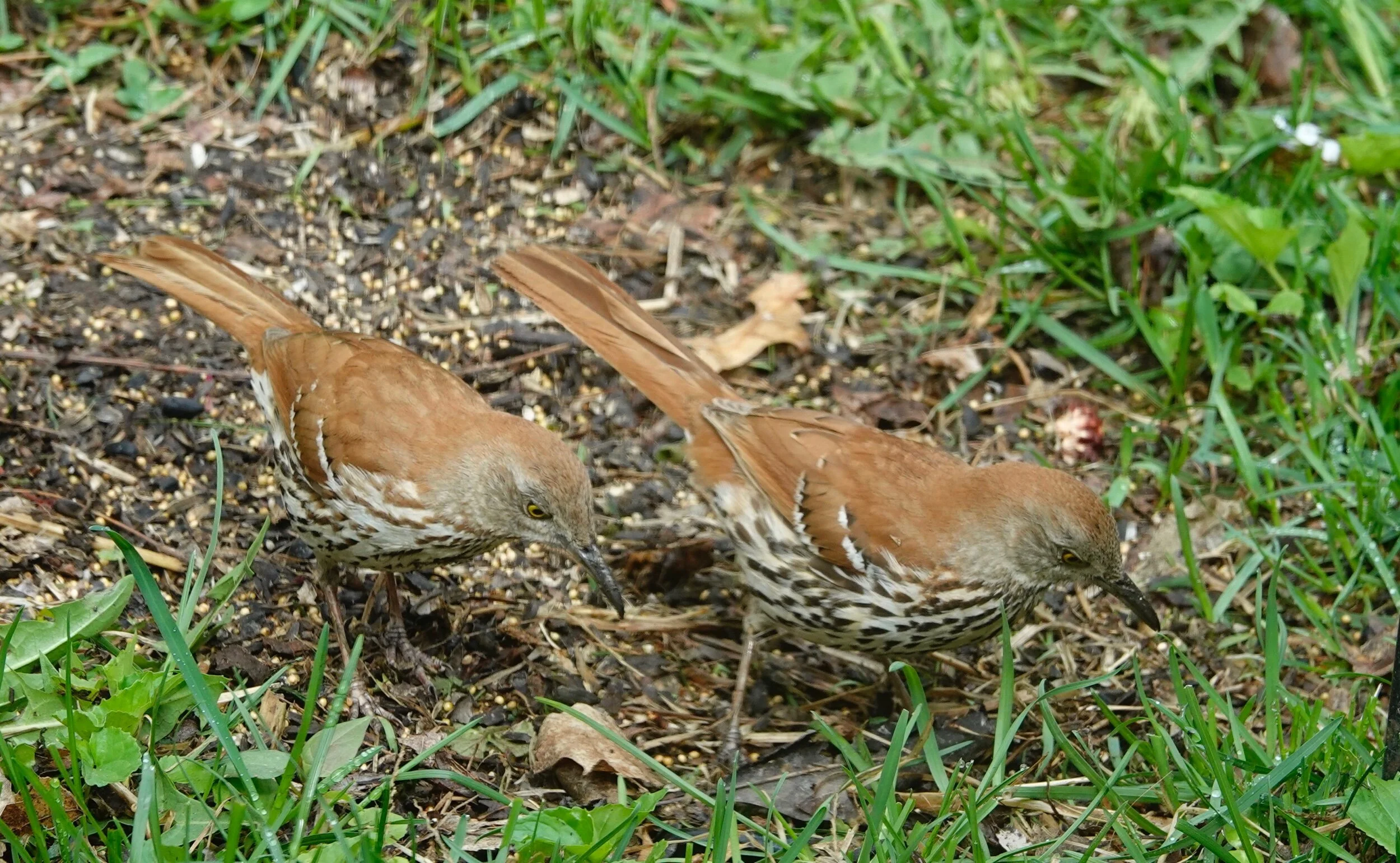
A pair of Brown Thrashers involved in a team-building exercise.
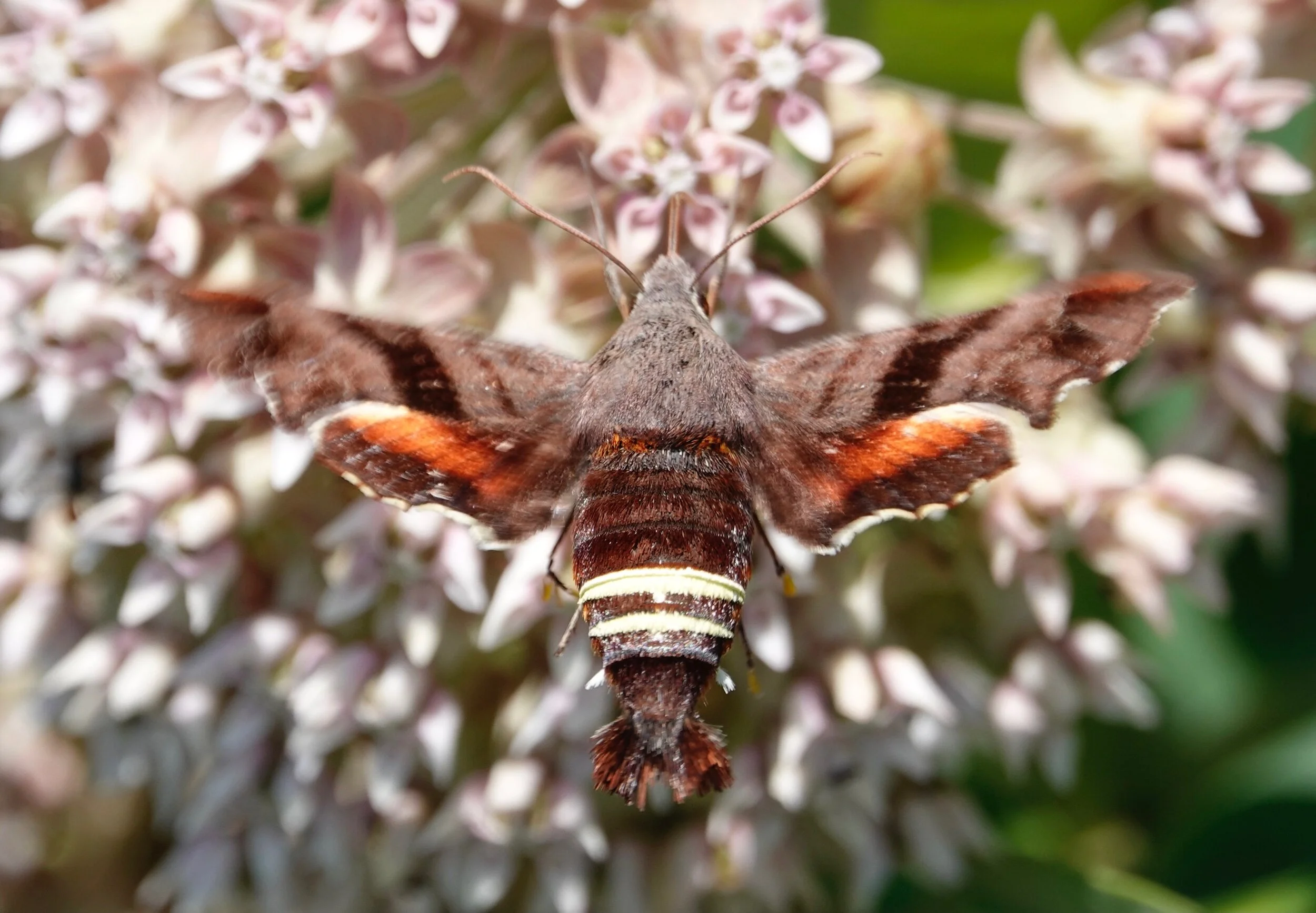
The Nessie in my non-Scottish yard. A Nessus Sphinx. The moth drinks nectar, which gives it powerful flight just as spinach gave Popeye muscles.
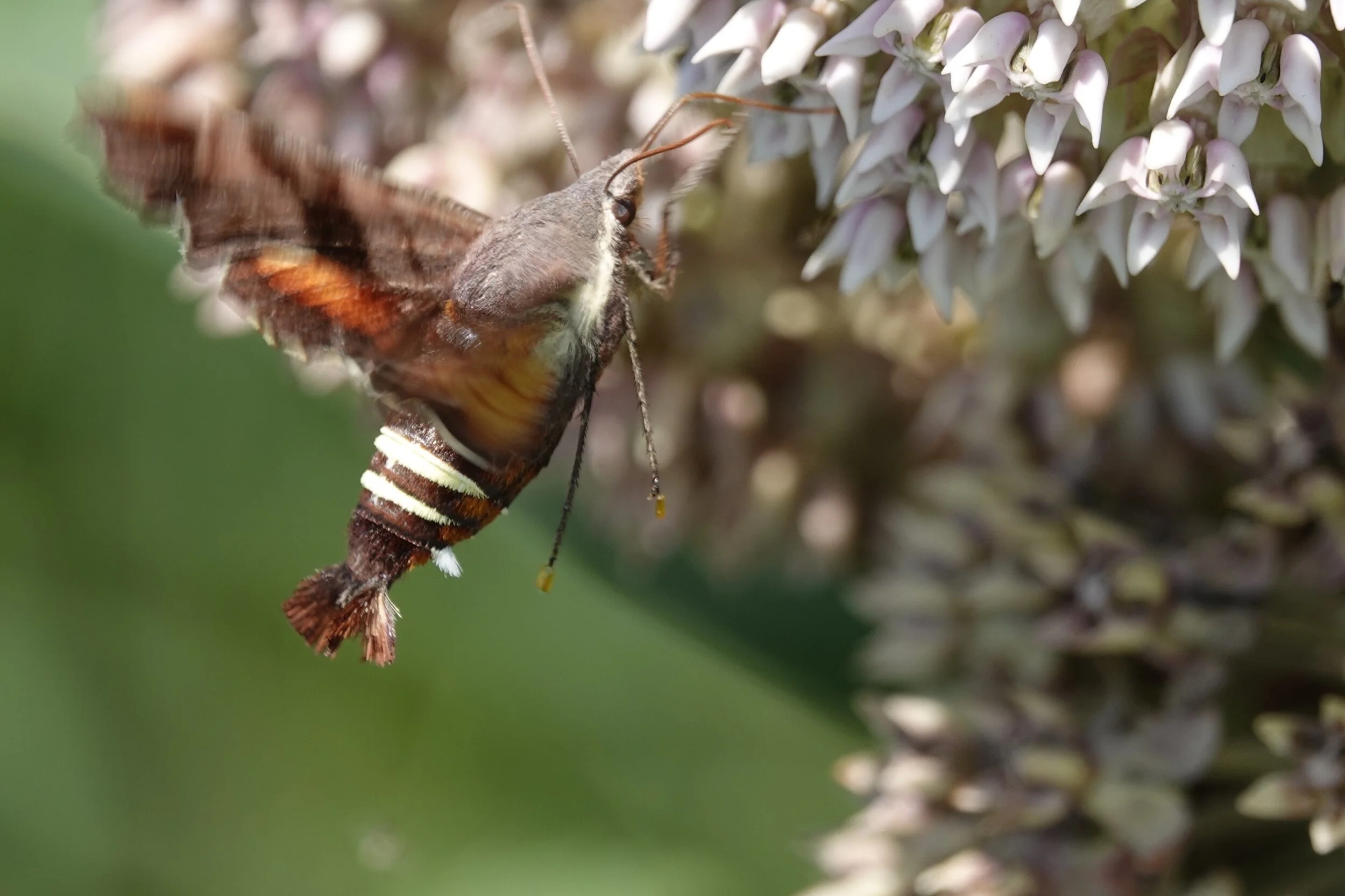
The Nessie in my non-Scottish yard. A Nessus Sphinx. The moth drinks nectar, which gives it powerful flight just as spinach gave Popeye muscles.
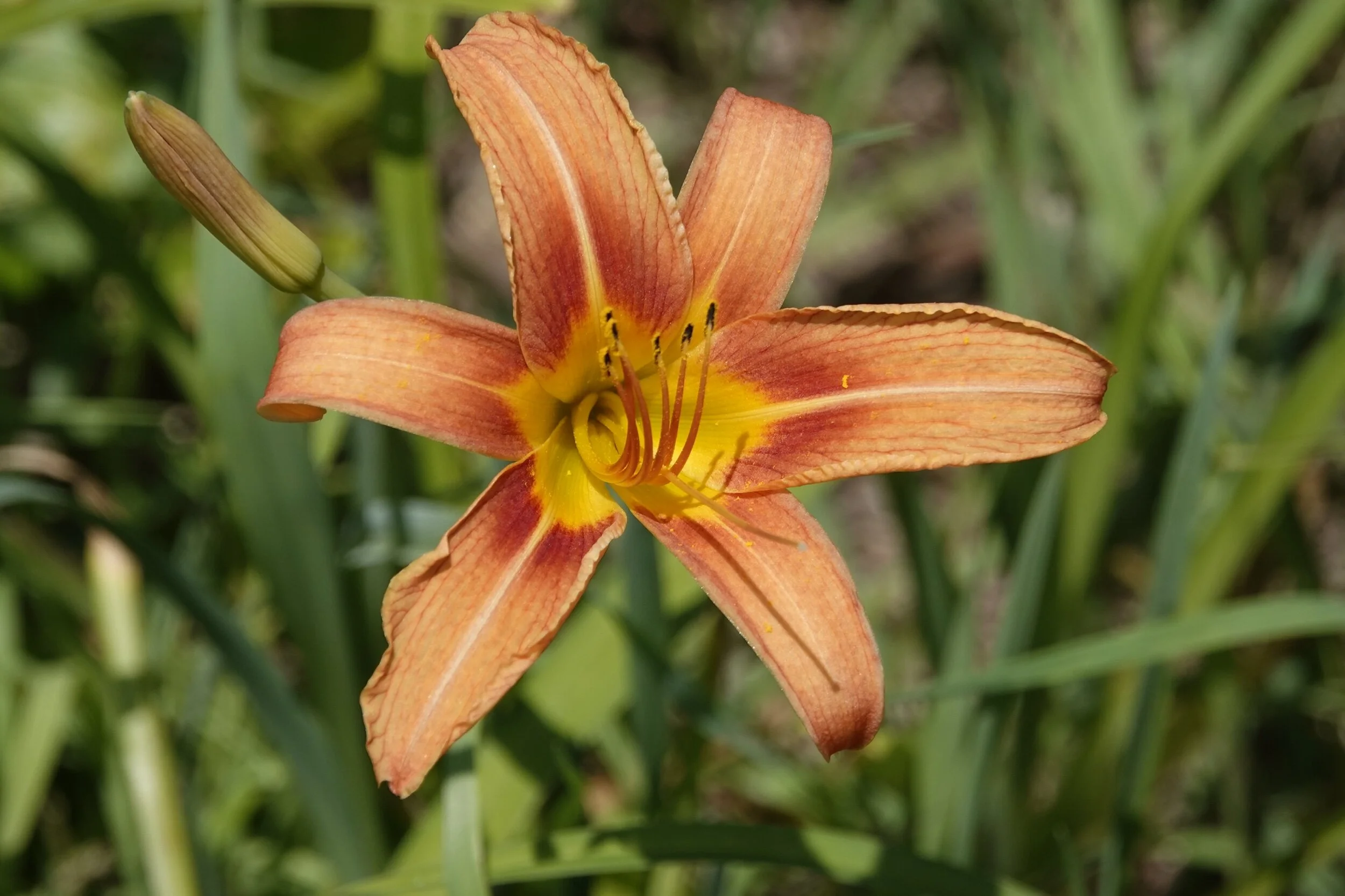
The ditch lily, sometimes called an outhouse
lily, is a vigorous orange-flowered daylily that finds a home in our road ditches. When I spot them, I sing a corrupted Beach Boys song, “Ditch baby, ditch baby, give me your hand. Give me something that I can remember.”
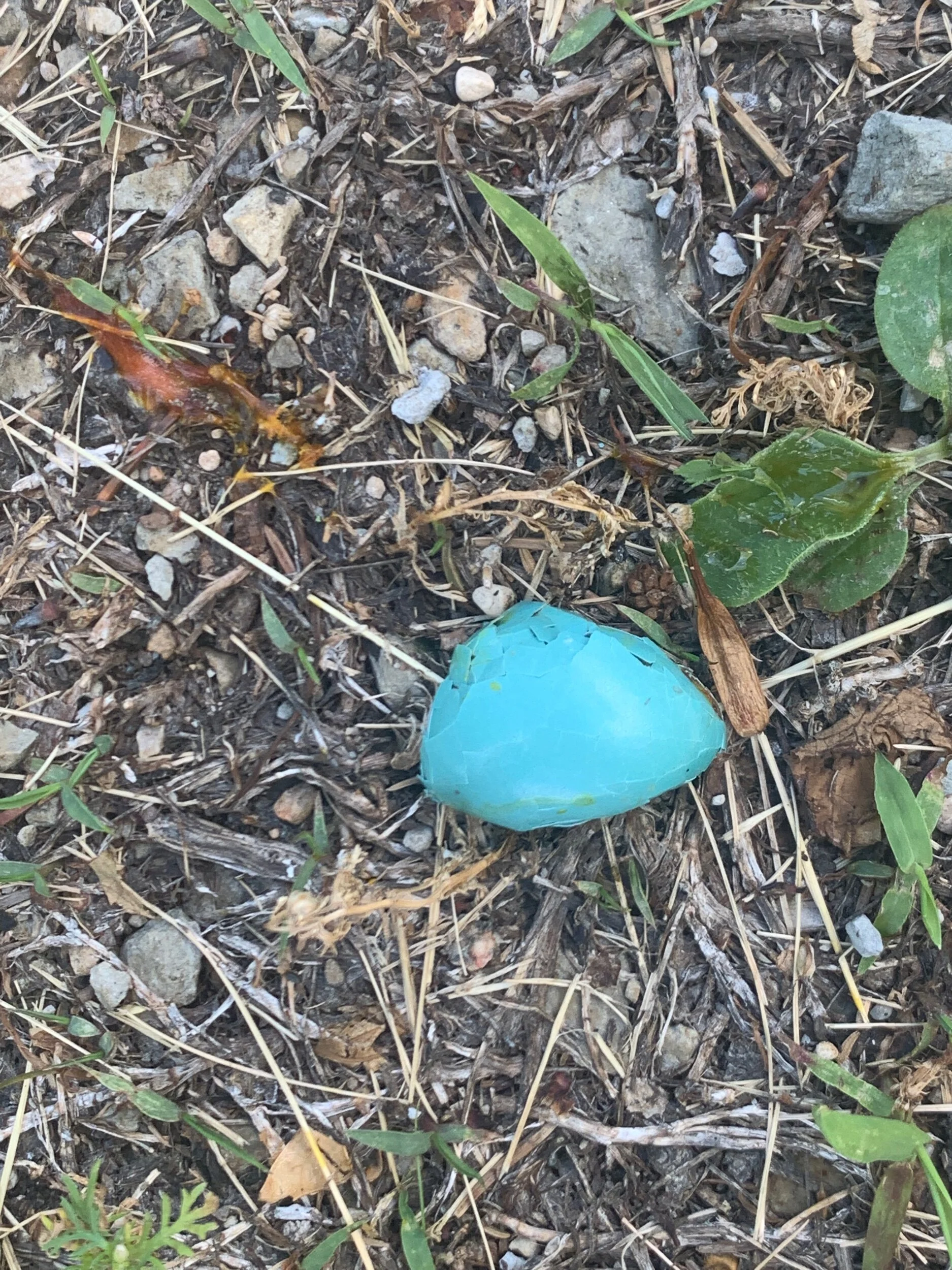
An American Robin egg on the ground. There’s a story there, a mystery.
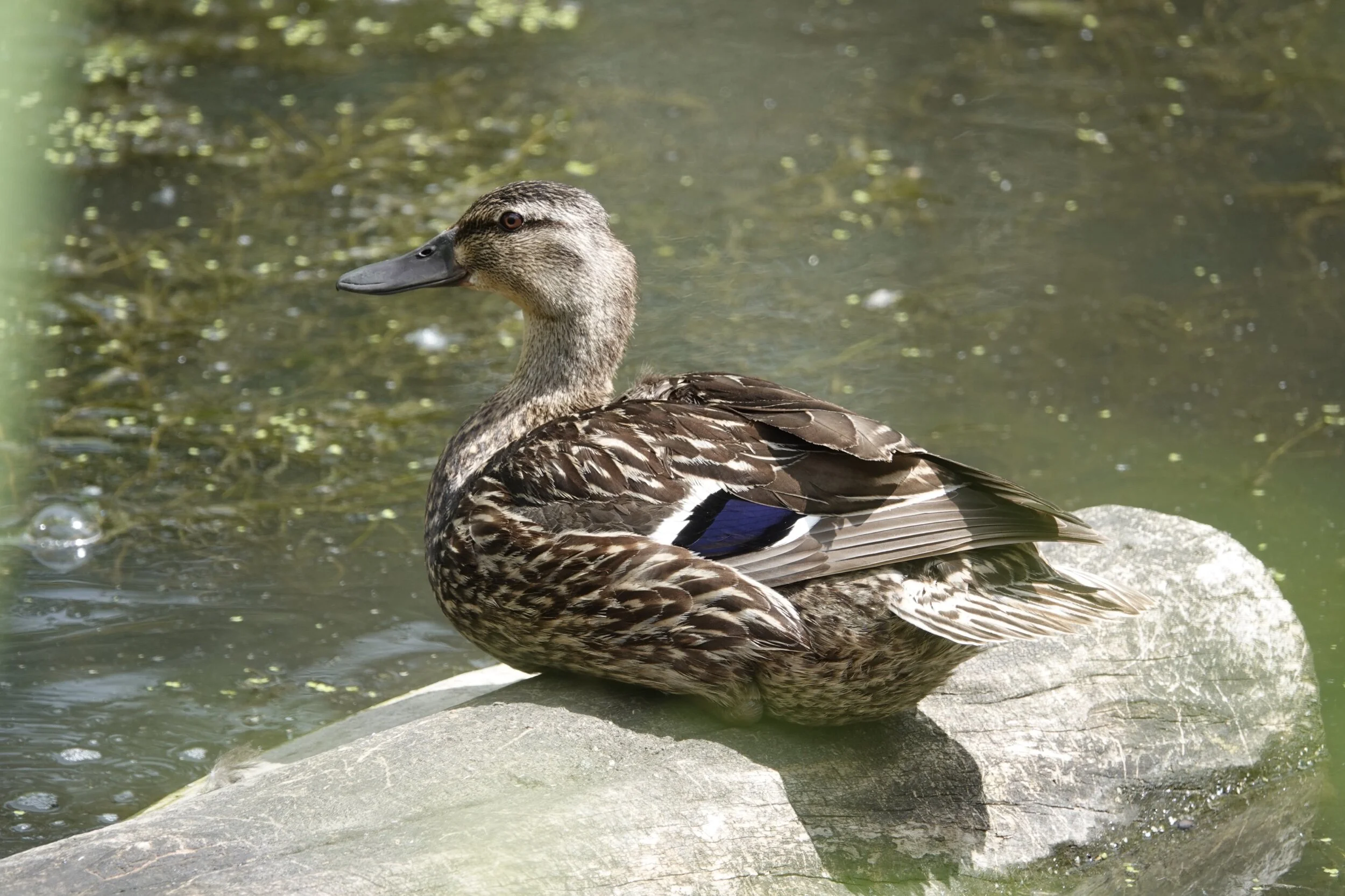
A Mallard hen suns herself while the turtle takes a break.
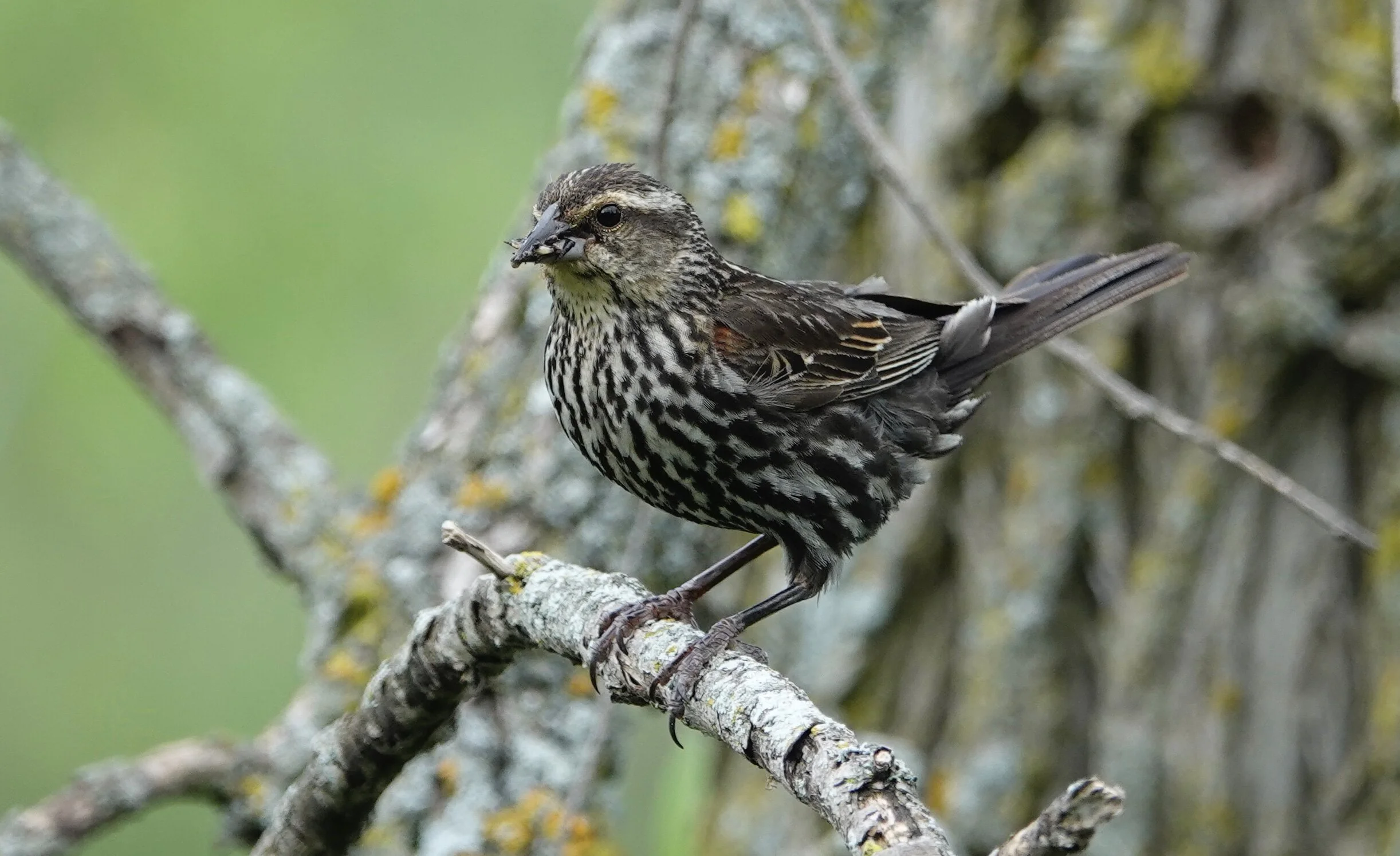
A Red-winged Blackbird brings lunch.
Naturally
The other side of the door sparked my curiosity. There lurked a chickadee and my lawn that thrives on benign neglect. I’m always thrilled to see a chickadee.
I heard it calling “beans.” I watched a common nighthawk slice the sky above a ballpark in New Ulm and realized the bird had become an essential part of that baseball game.
A bird bander married them
My son coached a girls’ softball team. The players complained about being attacked by a bird as they warmed up before a game. It was a killdeer that first feigned injury, and when that didn’t dismiss the intruders, it fluttered at them to protect her nest. No harm was done to girl or bird.
Keith Radel of Faribault told me this about Forest Strnad of Faribault, a late friend of ours who was a Methodist pastor and a bird bander. The bird Forest banded the most was a dark-eyed junco—over 10,000 banded. He banded 700 of Keith’s bluebirds with two birds returning. A tree swallow, banded in one of Keith’s nest boxes, returned seven years later to the same box in which it had hatched. Forest presided at Keith’s wedding on a Friday the 13th, which was good luck.
A money-grubbing crow
I’ve been involved with the American Bald Eagle Foundation (ABEF) in Haines, Alaska, for many years. The ABEF secured a trickster crow that plucked a dollar bill from a willing visitor’s fingers. Sadly, the crow developed seizures and never made it to Alaska. A raven will be trained to perform that dodge.
Soaked, bouncing and concerned
Double-crested cormorants perch in the sun with wings spread to dry. They have less preen oil than other birds and their feathers become soaked rather than shedding water like a duck’s. That might aid hunting underwater.
The wood duck is the only North American duck that regularly produces two broods in one season. This is more common in southern latitudes due to the longer breeding season. The short interval between broods indicates a female’s first one likely failed. The ducklings hatch with the ability to bounce.
The U.S. Fish and Wildlife Service has updated its list of Birds of Conservation Concern, a report mandated by the Fish and Wildlife Conservation Act of 1988. The new report identifies 269 bird species, subspecies, or populations that represent high conservation priorities for FWS and deserve proactive attention. A few of the newly listed Birds of Conservation Concern that caught my attention are: yellow-billed cuckoo, chimney swift, lesser yellowlegs, belted kingfisher, bobolink, scarlet tanager and rose-breasted grosbeak.
Q&A
“Do ticks fall from trees?” It’s a myth like bug zappers are effective against mosquitoes, deer whistles rid the roads of deer, electronic devices repel mice, and hedge apples (Osage orange fruit) or horse chestnuts discourage spiders. Ticks do climb while trying to find food (blood), but only to the height of the animal. They look close to the ground (grass) for mice and other rodents, and in bushes or tall grasses for larger mammals such as humans and deer.
“When do turtles lay their eggs?” Most of Minnesota's turtle species lay eggs in late May through June. Raccoons and skunks destroy nests by digging up the eggs. A turtle nest cage can be built to help protect them.
https://wiatri.net/Inventory/WiTurtles/Volunteer/Images/ProtectingTurtleNests.pdf
“Are those the same robins in my yard as last year?” There is about a 50% chance one of last year’s nesting pair has returned, but only 25% of fledged robins survive until November.
“I didn’t see many cardinals in Minnesota when I was a child. Was I looking in the wrong places?” Cardinals have expanded their range north into Canada taking advantage of moderate temperatures, human habitation and bird feeders. The growth of towns and suburbs across America has helped the cardinal expand its range. There is speculation the southern birds followed the railroad tracks north.
“What should I do if I find an injured bird?” Try to make the animal as comfortable as possible and call the Wildlife Rehabilitation Center of Minnesota at 651-486-9453. If you find an injured raptor, contact the University of Minnesota Raptor Center at 612-624-4745.
“What birds have more than one brood a year?” Here are some that commonly do: mourning dove, cardinal, robin, house sparrow, eastern bluebird, house wren, eastern phoebe and barn swallow.
“Do deer eat milkweed?” People have told me they have had rabbits and deer eating their milkweed, but it’s unlikely to be their favorite food. I watched a rabbit eat a leaf.
Thanks for stopping by
“In nature, one never really sees a thing for the first time until one has seen it for the fiftieth.”—Joseph Wood Krutch
“Destroying rainforests for economic gain is like burning a Renaissance painting to cook a meal.”—E.O. Wilson
Do good.
©Al Batt 2021
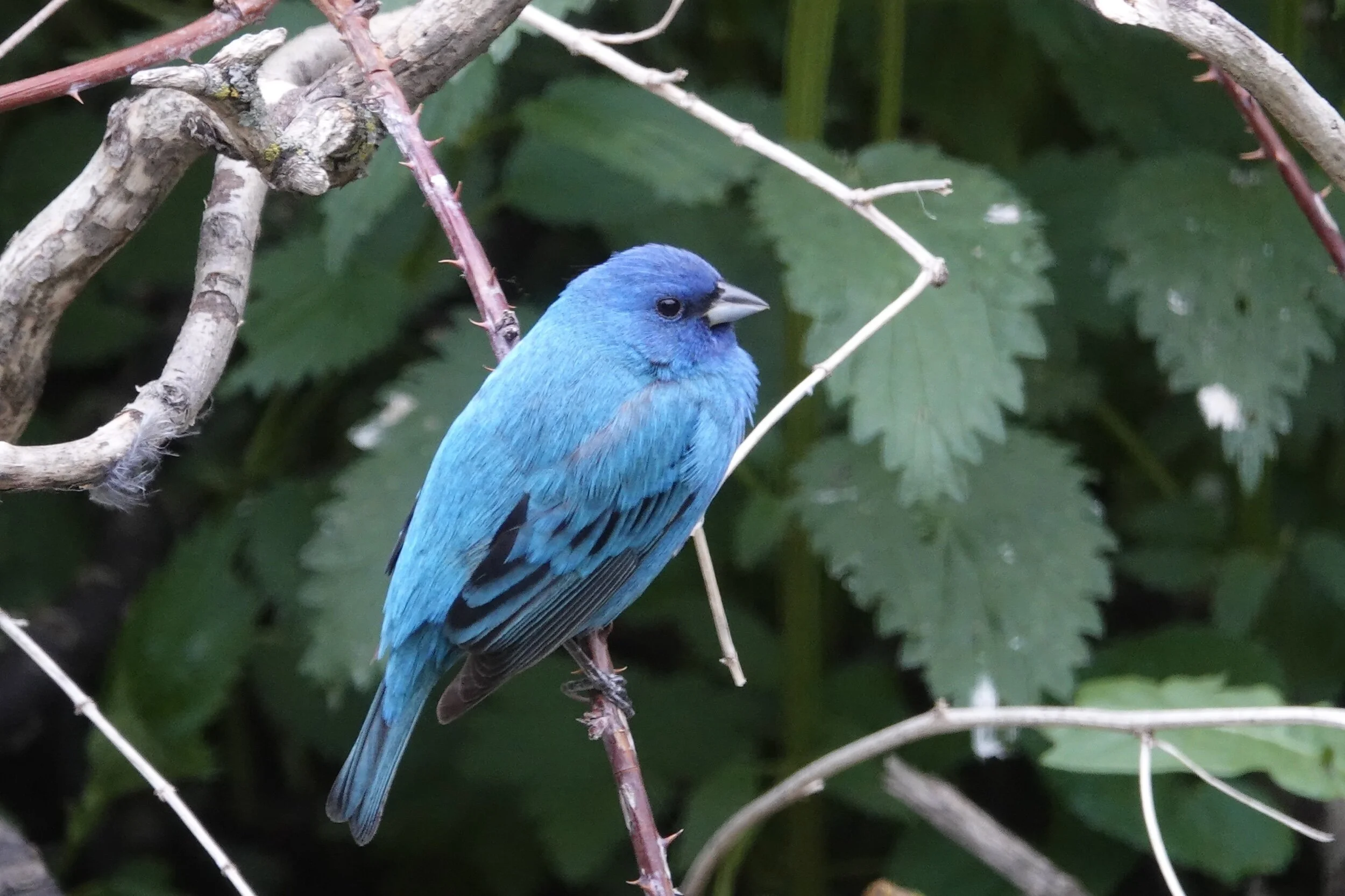
My father called the Indigo Bunting a blue canary. Photo by Al Batt
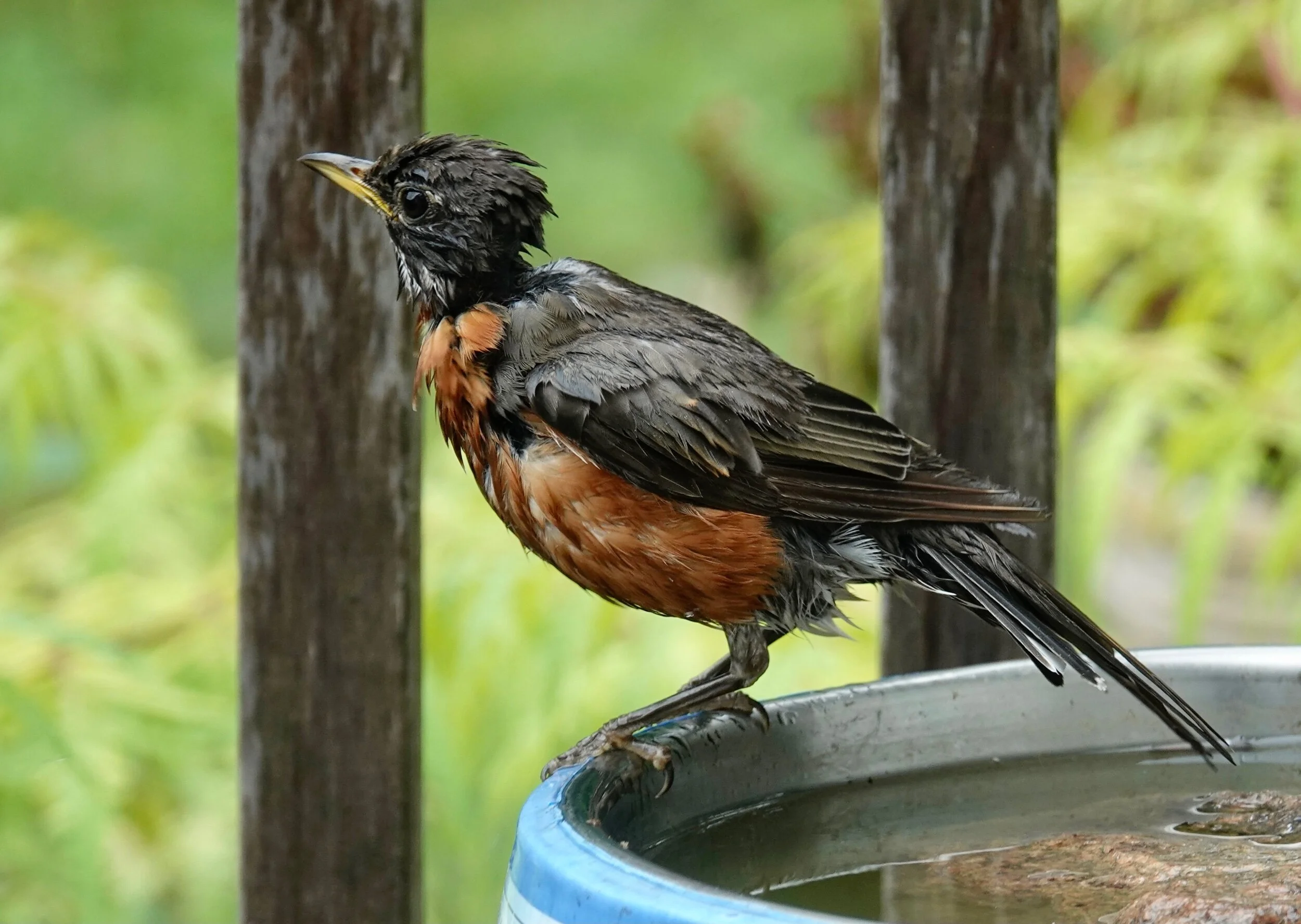
An American Robin loves a bath.
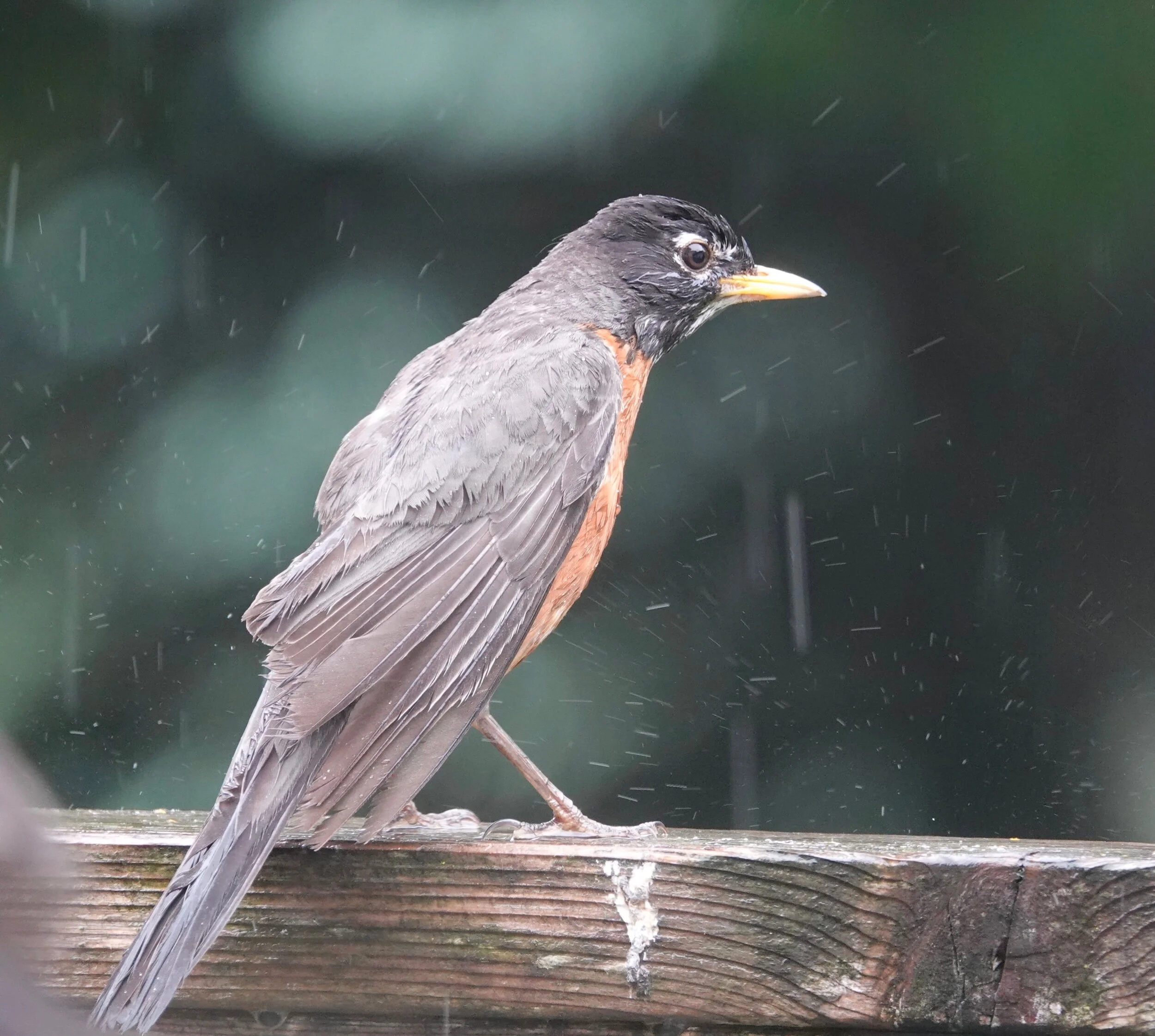
What does a robin see when it looks between the raindrops?
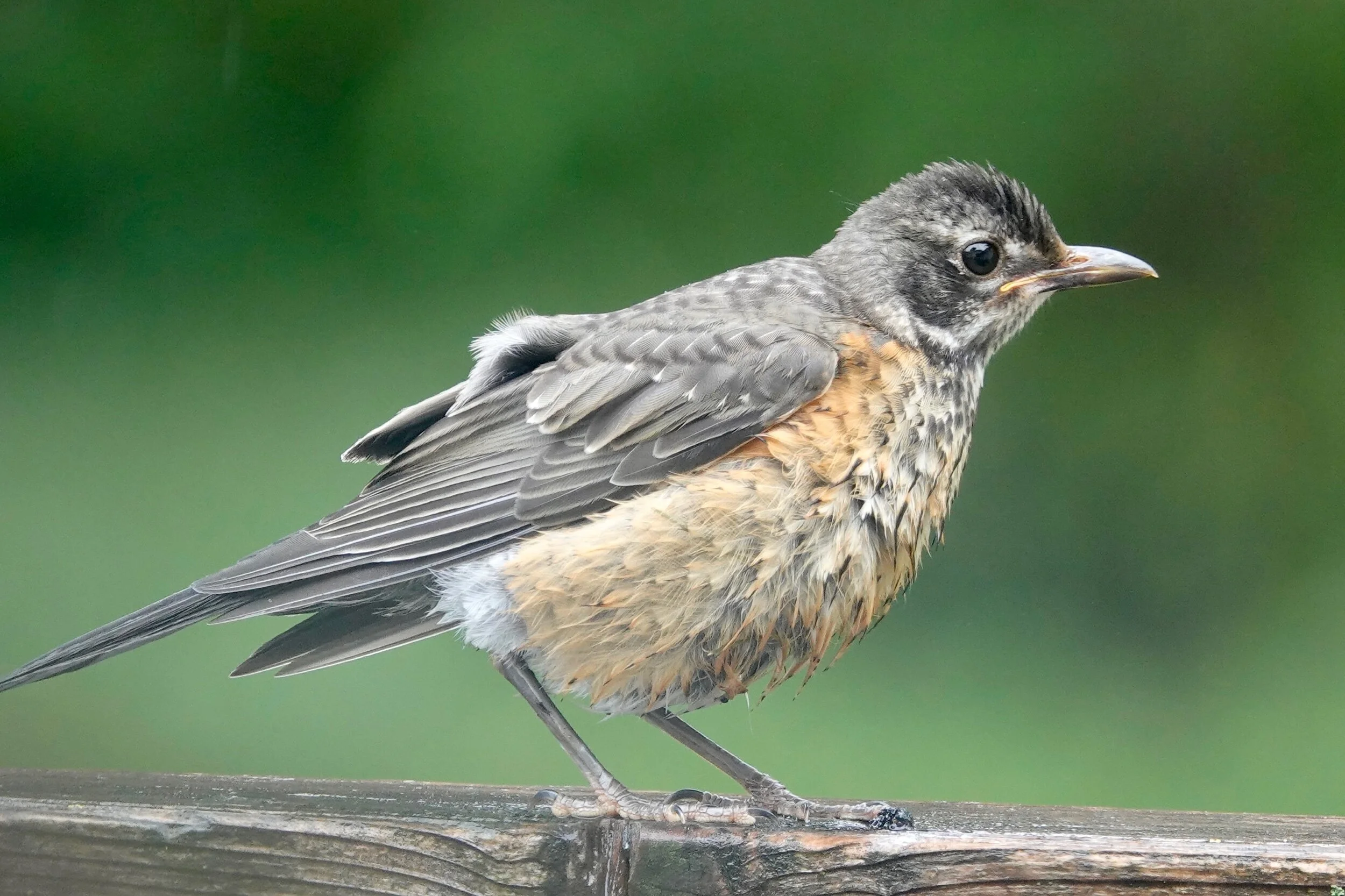
This young robin, who had left the nest before being able to fly, has become a fine flier.
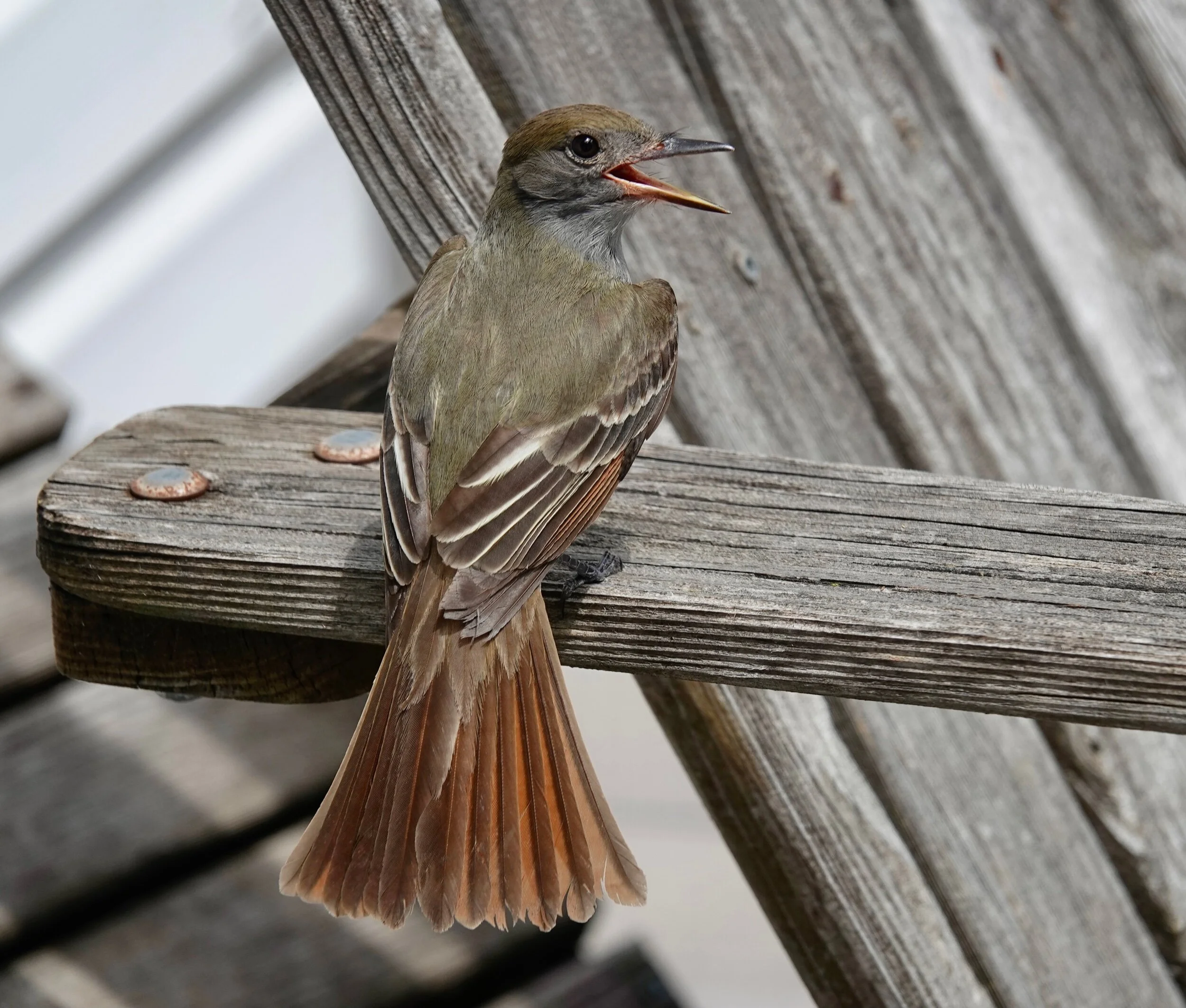
A Great Crested Flycatcher takes a seat (if a bird can take a seat) on a deck chair.

Vanilla Fudge sang to this Red-winged Blackbird, “You really don't need me, you just keep me hanging on.”

“Holy gourds, Batman!” Purple Martins.

These Purple Martins are out of their gourds.
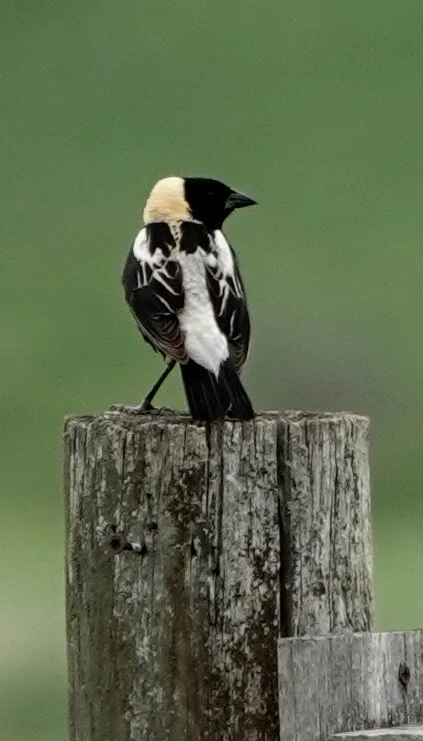
The Bobolink has one of the happiest birdsongs.
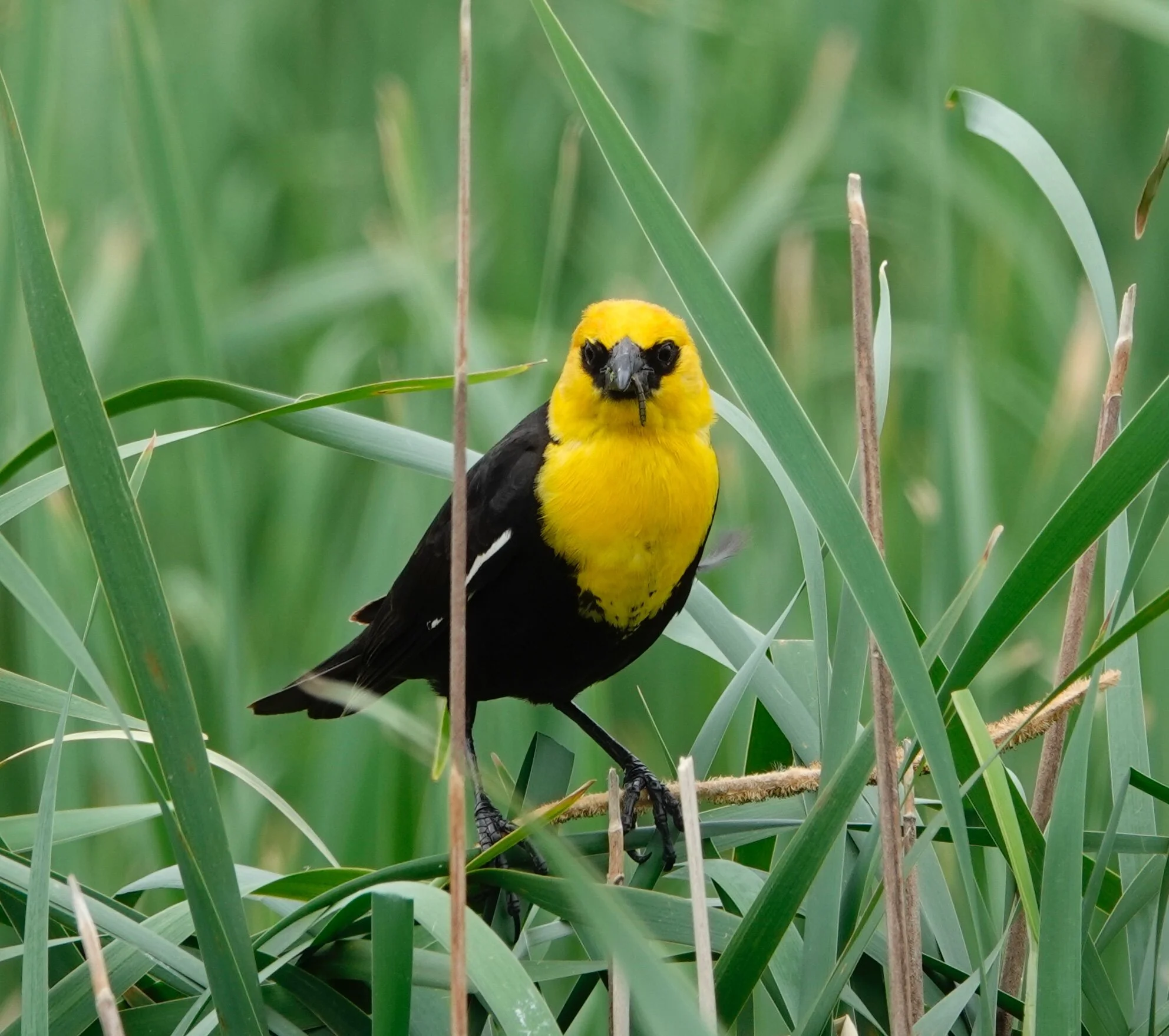
A Yellow-headed Blackbird is a mustard head extraordinaire.
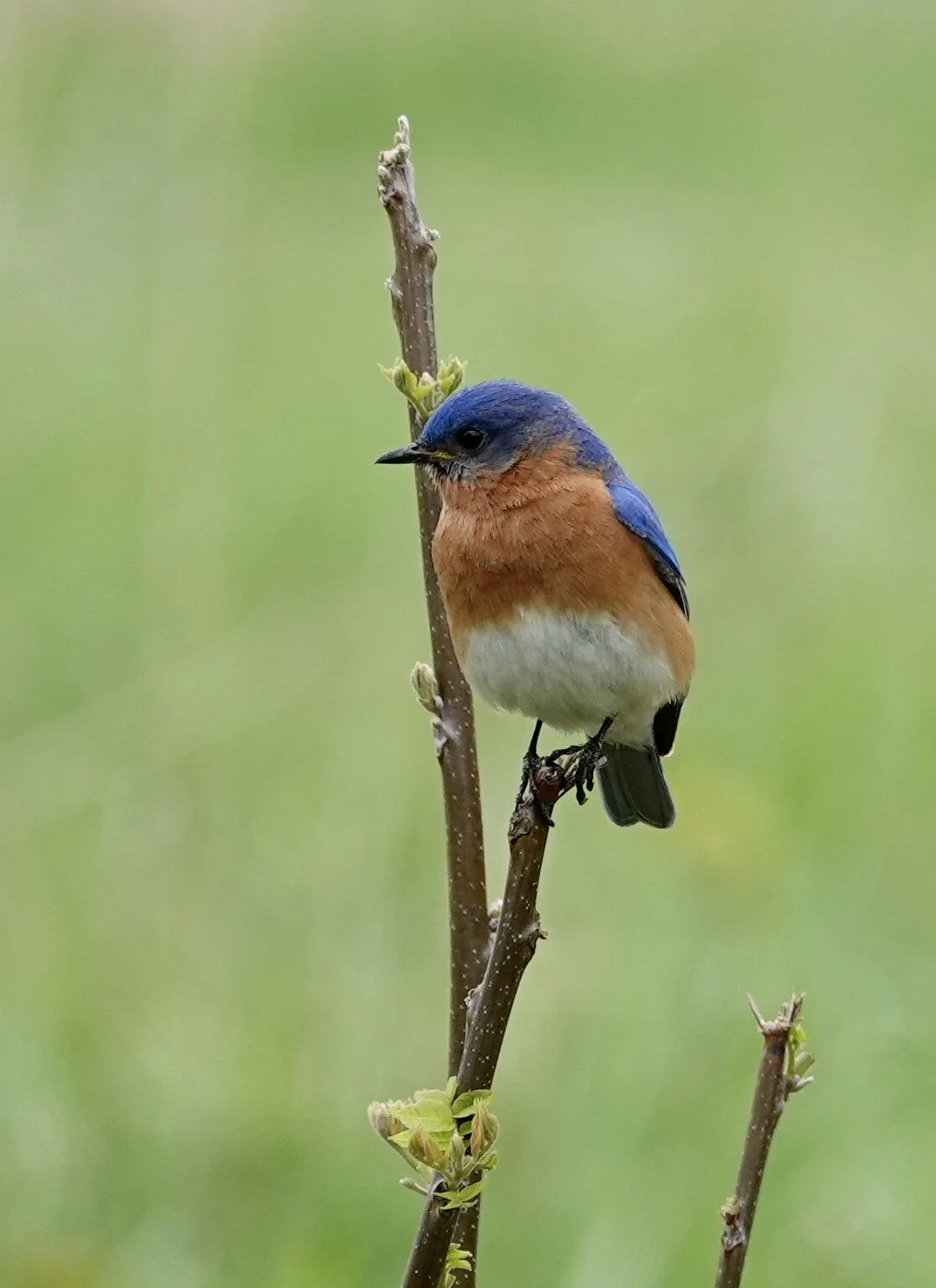
“Morning begins with the singing of the bluebird
Up with the sun, rise everyone
Filling the air is the music of the bluebird
Till the day is done.” —Piglet.
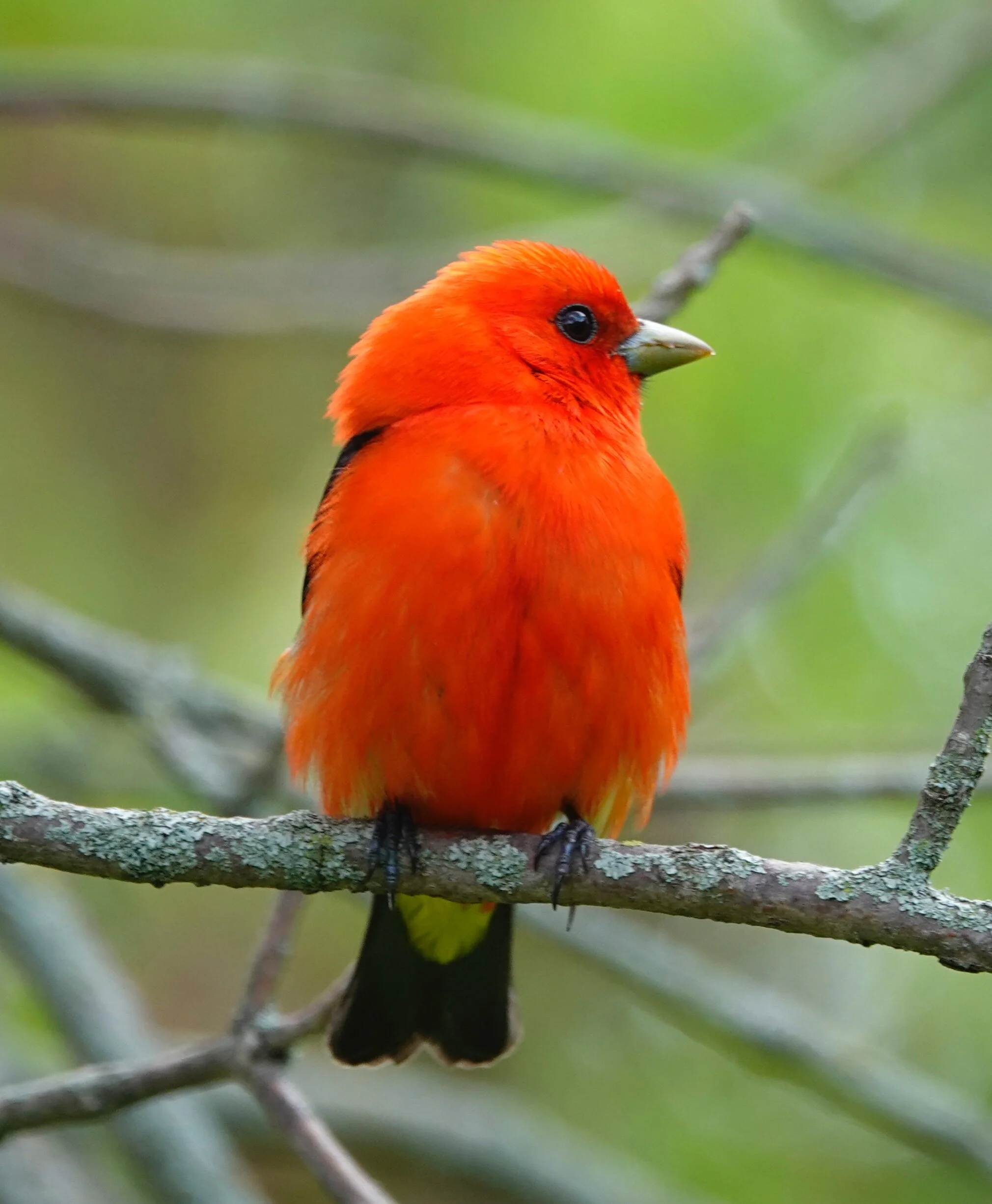
“O my Luve is like a red, red rose
That’s newly sprung in June.—Robert Burns. A Scarlet Tanager.

I didn’t want any trouble, so I hid my head in the sand.
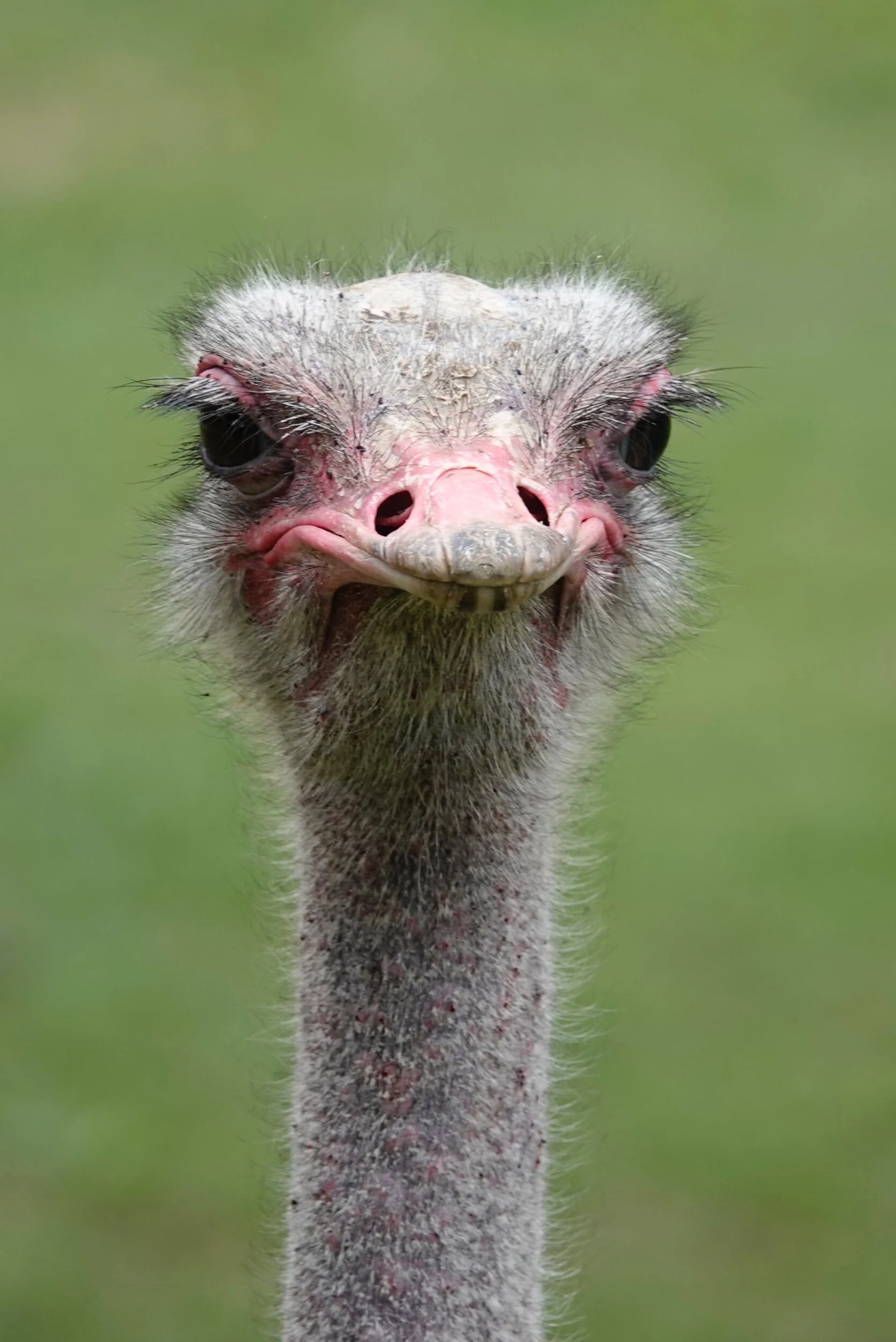
A friend raised ostriches years ago and had one that tipped the scales at well over 300 pounds. That was before it found a CrossFit gym.
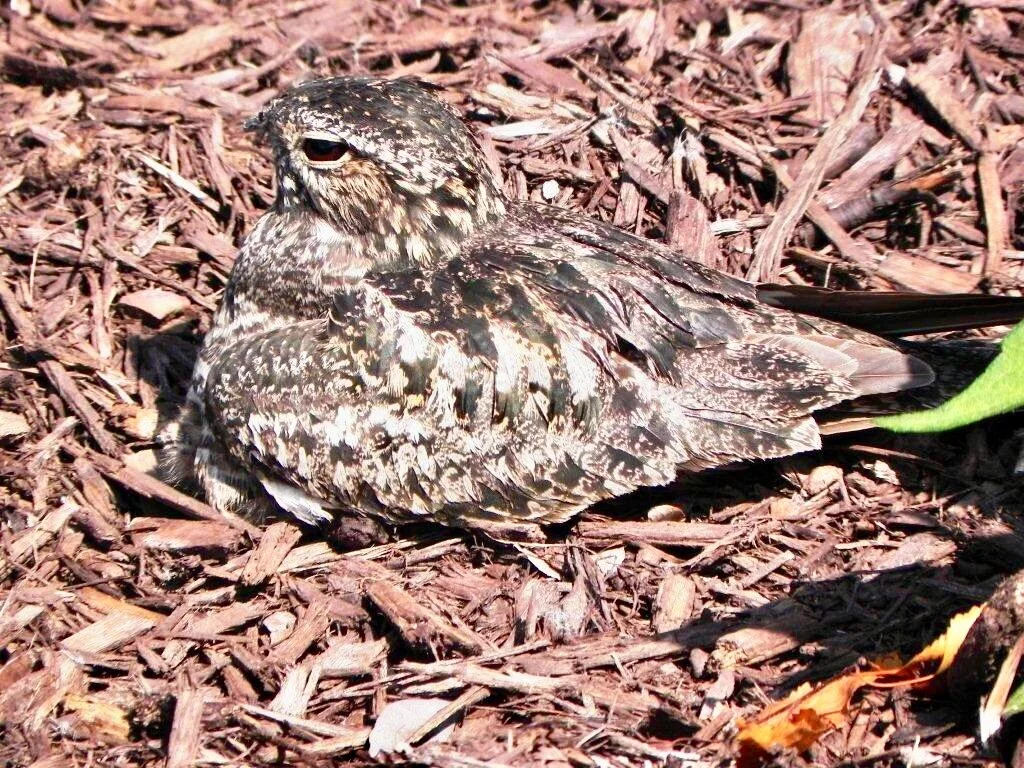
I heard it calling “beans.” I watched a common nighthawk slice the sky above a ballpark in New Ulm and realized the bird had become the baseball game.

The baby robins came out of the blue—blue eggs, that is.
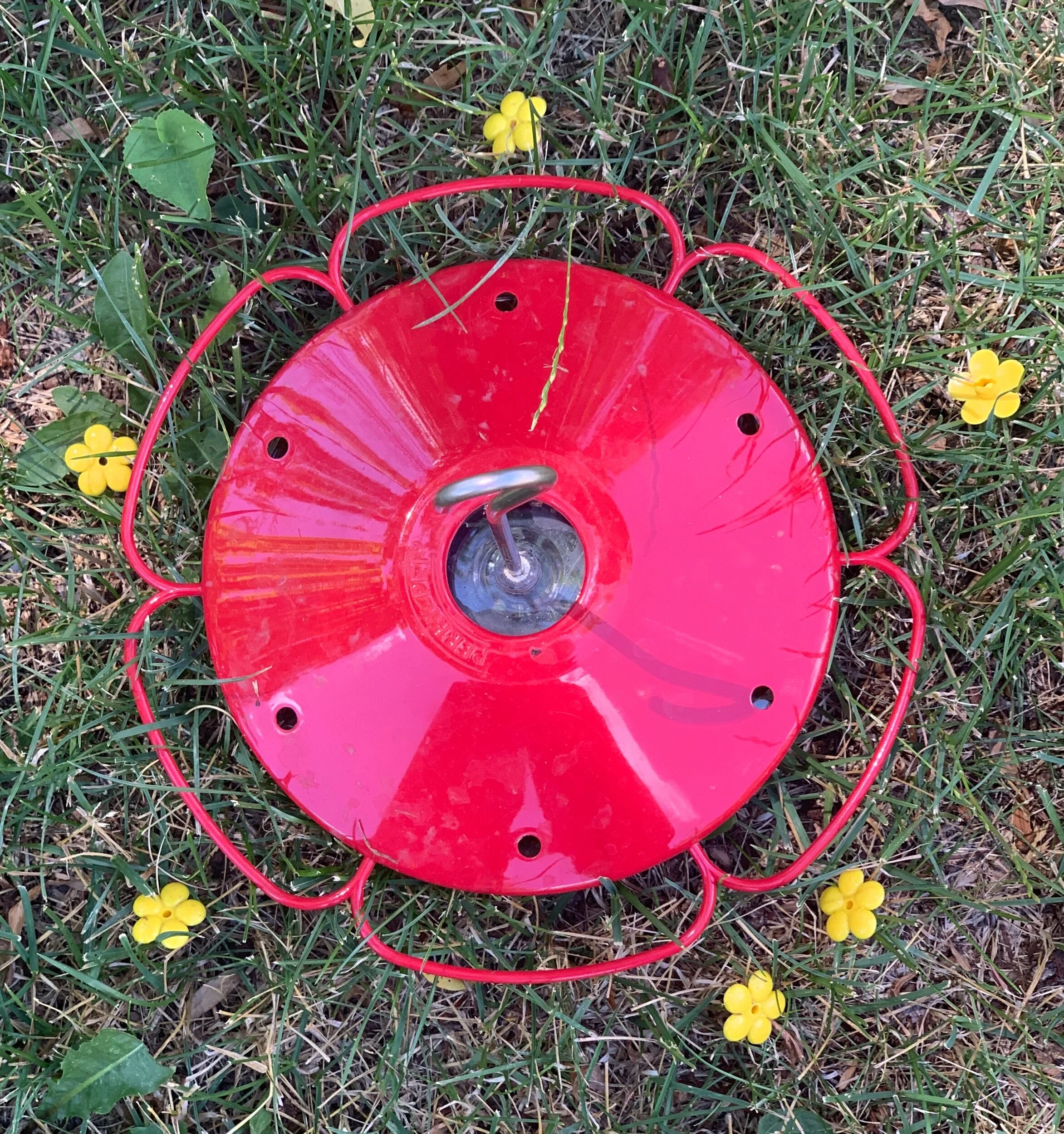
I was late getting home and didn’t get the hummingbird feeder down before a raccoon had the opportunity to take it down for me. The raccoon had removed all six of the yellow flowers from their cavities and slurped down all the sweet water.
Naturally
In another time, I traveled around one day a week taking photos and peering at birds. No birds were harmed in the process. My faithful Chihuahua companion Sancho accompanied me. He got his name because of the book I was reading at the time I brought the puppy home in my coat pocket. Sancho Panza was Don Quixote’s squire in the novel “Don Quixote” by Miguel de Cervantes. Don Quixote represented illusion, Sancho Panza represented reality. The canine Sancho was a good friend. A good listener to my quixotic ideas.
Such undertakings built a thirst and I’d swing into the drive-through of a fast-food restaurant to get a cup of iced tea. This was Sancho’s favorite part of birding and photography. He perked up when he saw the person at the restaurant’s window and immediately looked his sweetest. “Oh, your dog is so cute. Would it be OK if I gave him a little bit of hamburger?” said the worker. It was OK with Sancho.
Bluebird blues
Keith Radel of Faribault maintains 175 sites for bluebird nest boxes and told me bluebird numbers in those boxes were down 53% from last year. Many of his birds winter in Arkansas, Texas or Oklahoma and winter storms were hard on them. The best year Keith has had fledging bluebirds was in 2012. A nasty spring here dropped that number 53% in 2013. The availability of houses has led to double the number of chickadees nesting in them this year. He has two chickadee pairs nesting 10 feet apart and has noticed no disputes among them.
President of birding
President Theodore Roosevelt was one of the most powerful voices in the history of American conservation. After becoming president in 1901, Roosevelt established 150 national forests, 51 federal bird reserves, four national game preserves, five national parks and 18 national monuments on over 230 million acres of public land. He identified 91 bird species he saw or heard on the White House lawn.
Hummingbird highlights
When the Spanish first encountered hummingbirds, they called them resurrection birds—believing something that shining must die each night and be reborn the next morning. Spanish missionaries used hummingbirds to explain the resurrection. Male Anna's hummingbirds dive at speeds of 385 body lengths per second according to a study in the U.K. journal “Proceedings of the Royal Society B.” Mayan legend said the first two hummingbirds were created from small feather scraps left over from the construction of other birds. Hummingbirds are attracted to the color red. That includes parked cars, lipstick and hats.
Guy wires
Bob Janssen of Golden Valley told me he and Ray Glassel were birding years ago when they found 978 dead birds (including two yellow rails) near a communications tower by Lewisville. Guy wires can be bird-killers in a fog.
Q&A
“What is your favorite raptor?” I think the American kestrel is the most beautiful. The northern harrier, once called a marsh hawk, kept me company when I was a mere stripling along Mule Lake. The peregrine falcon because its TV channel kept me entertained when I was hospitalized. And the merlin because I can’t help but watch one when I see one. My least favorite is a Toronto Raptor.
“Does any bird have a beak longer than its body?” The sword-billed hummingbird is the only bird to have a beak longer than its body.
“Will barn swallows reuse nests?” They may use nests from previous years, but avoid those heavily infested with mites or other parasites. When reusing nests, they clean out old feathers and add new mud to the nest’s rim. They put their cup-shaped nests on upright surfaces like docks, bridges, barns and the eaves of other buildings. The nests are built of mud reinforced with grass and lined with feathers and fine grasses.
“How many nests does a cardinal have each year?” Cardinals (Cardinalis cardinalis) commonly raise two broods in Minnesota. When the first brood fledges, the father takes care of the fledglings as the mother builds a second nest, and lays and incubates eggs.
“Do dragonflies eat many mosquitoes?” Not nearly as many as I wish they did because adult dragonflies and mosquitoes can keep different hours, but the carnivorous dragonfly nymphs devour mosquito larvae.
Thanks for stopping by
“The animal shall not be measured by man. In a world older and more complete than ours, they move finished and complete, gifted with extension of the senses we have lost or never attained, living by voices we shall never hear. They are not brethren; they are not underlings; they are other nations, caught with ourselves in the net of life and time, fellow prisoners of the splendor and travail of the earth.”—Henry Beston
“And since all this loveliness can not be Heaven, I know in my heart it is June.”—Abba Gould Woolson
Do good.
©Al Batt 2021
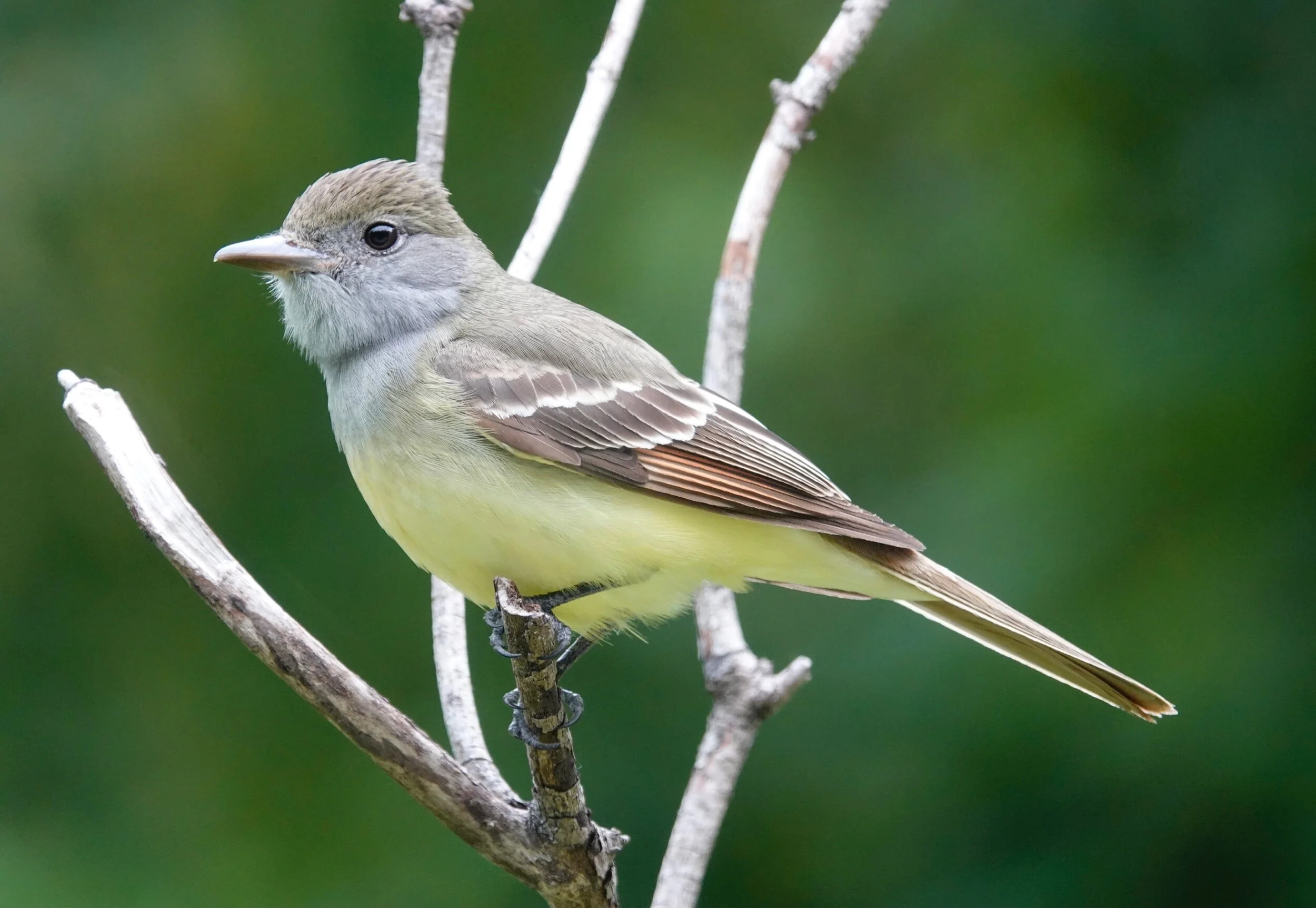
There are OK crested flycatchers and there are good crested flycatchers, but this is a great crested flycatcher. Photo by Al Batt
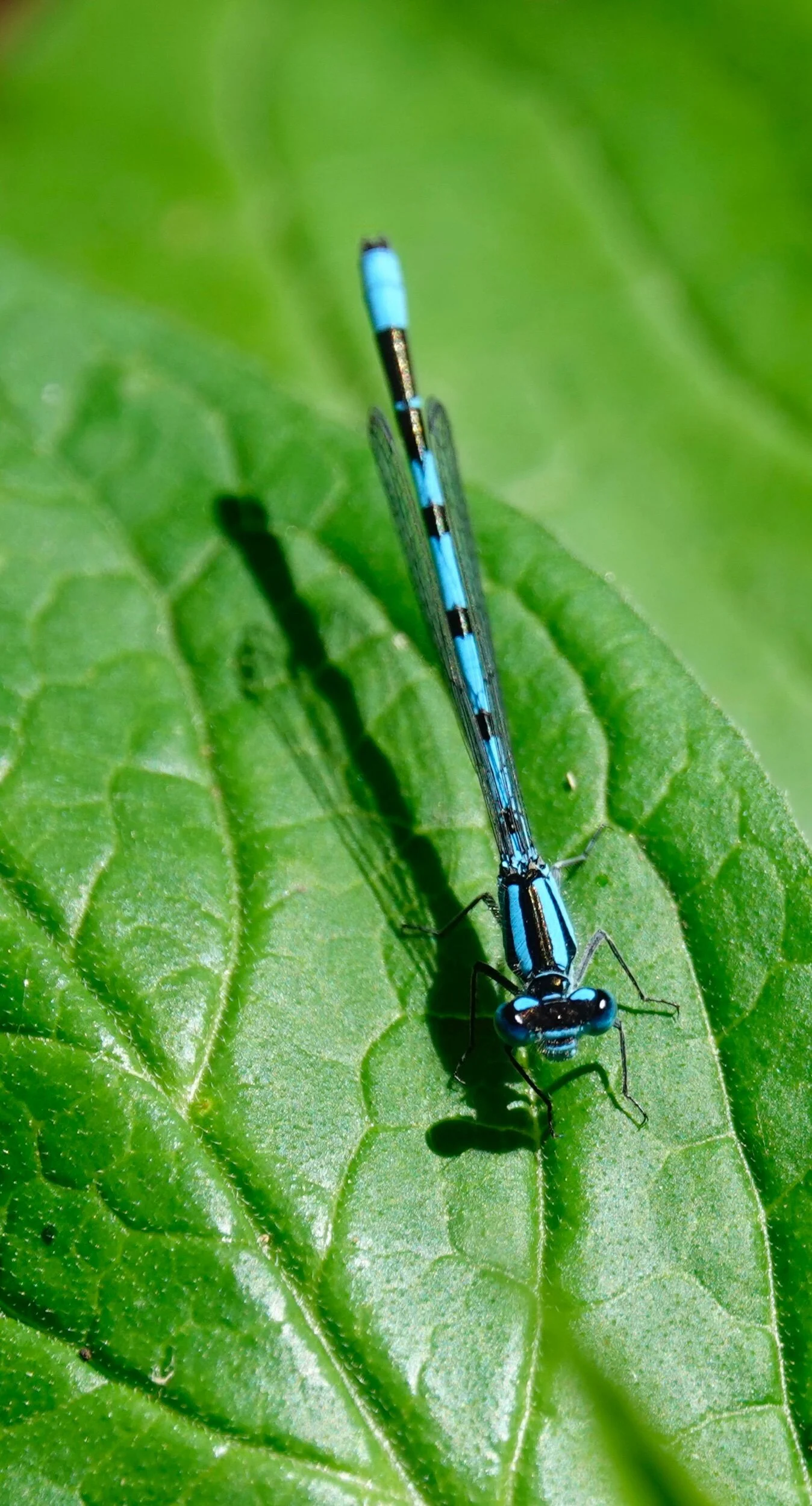
A Bluet Damselfly is a lovely thing to encounter.
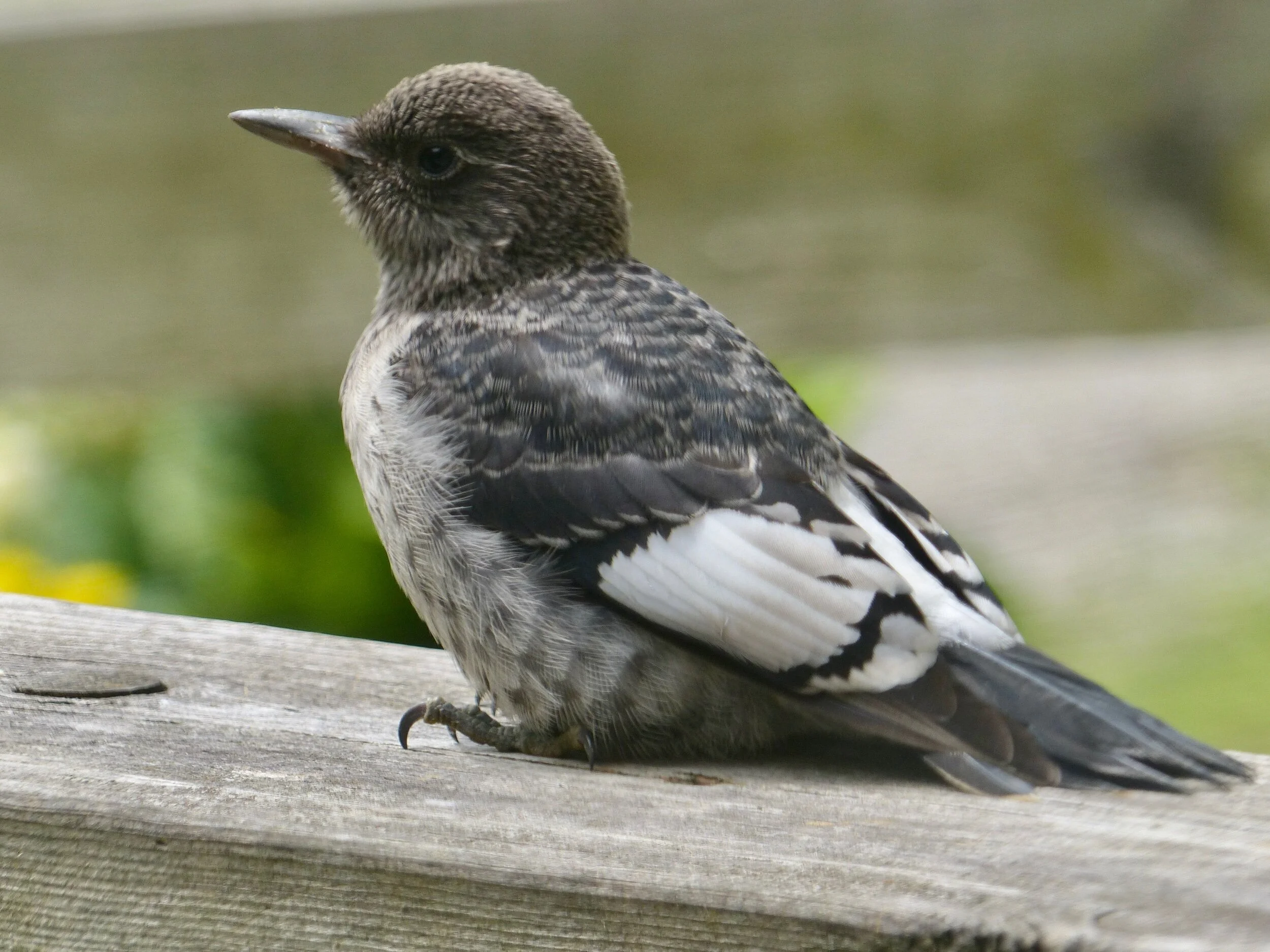
When you’re too young to be an expert at flying, you just wing it.
A young Red-headed Woodpecker.
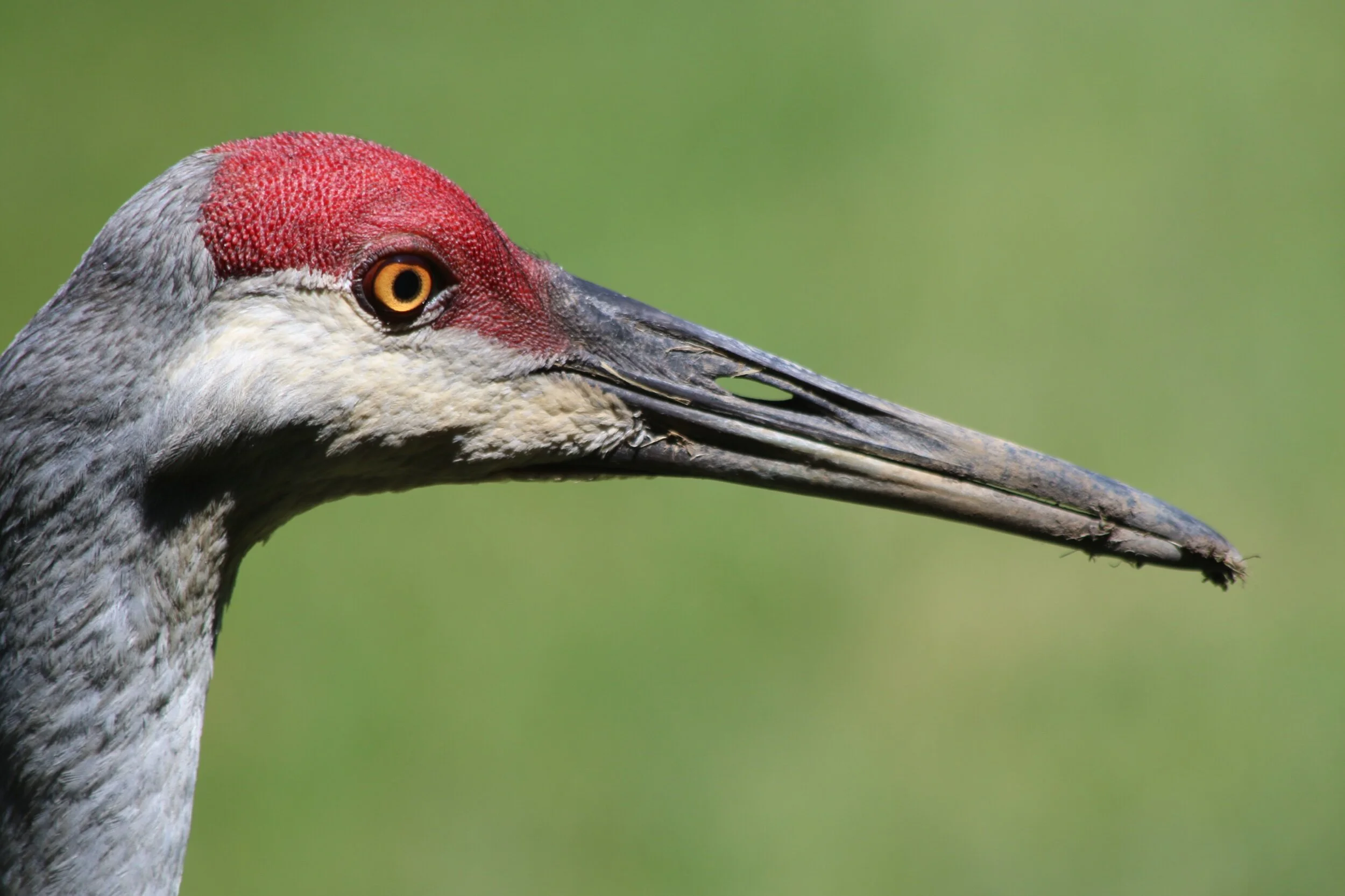
I found a number of Sandhill Cranes on my Breeding Bird Survey route. It was a very good day.
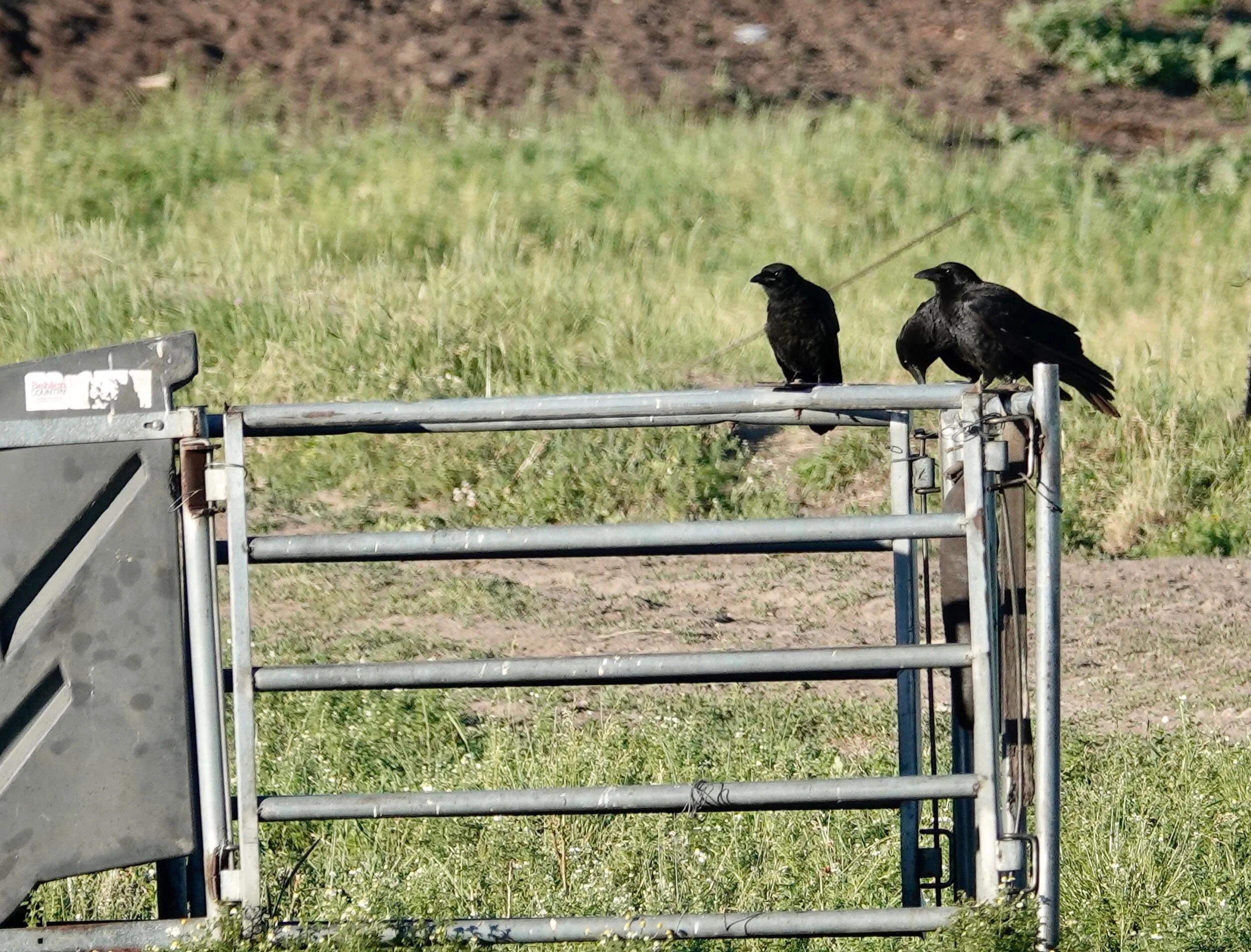
Crows pecking a lock.
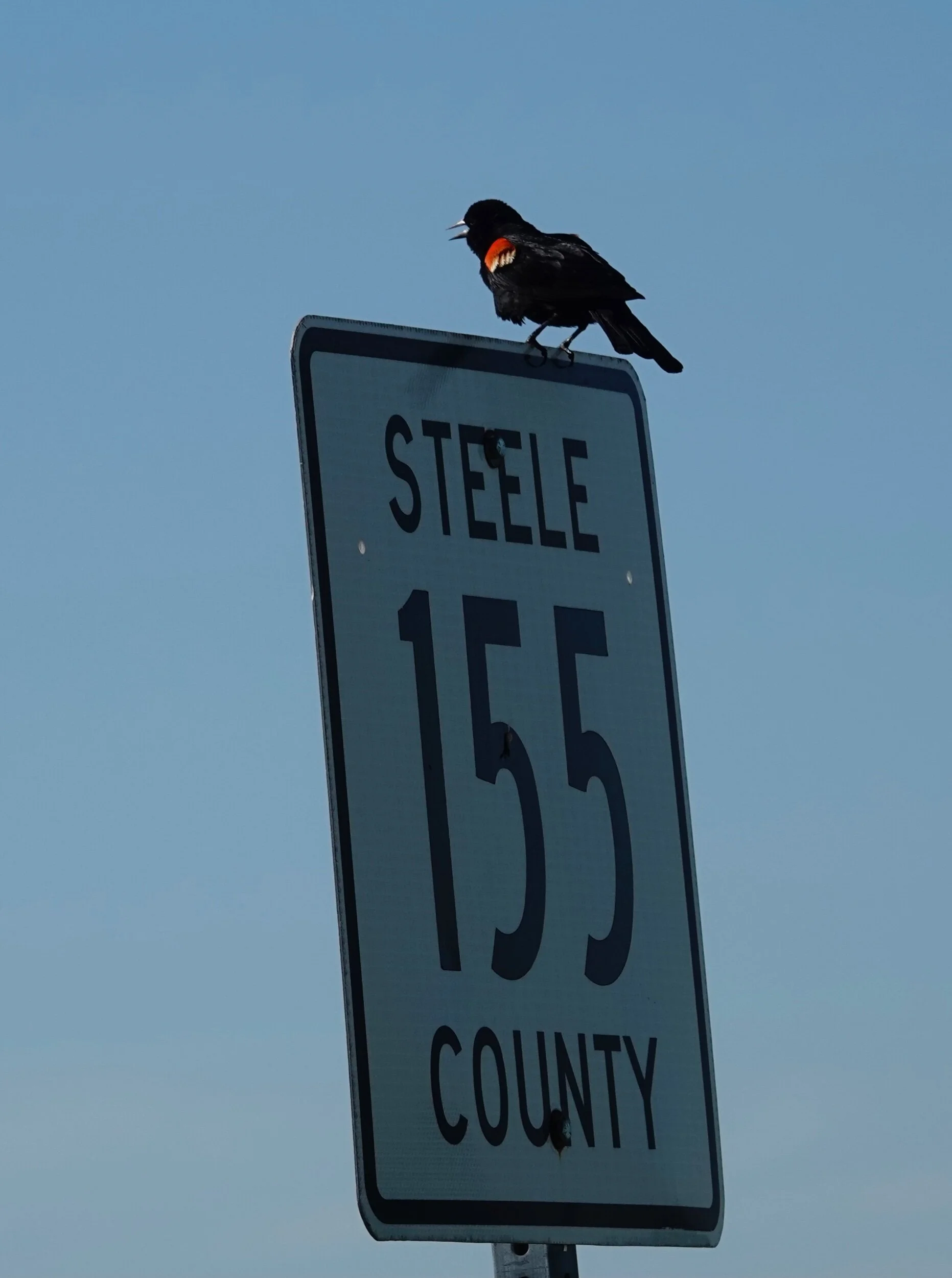
I know what county it was where I saw this Red-winged Blackbird.
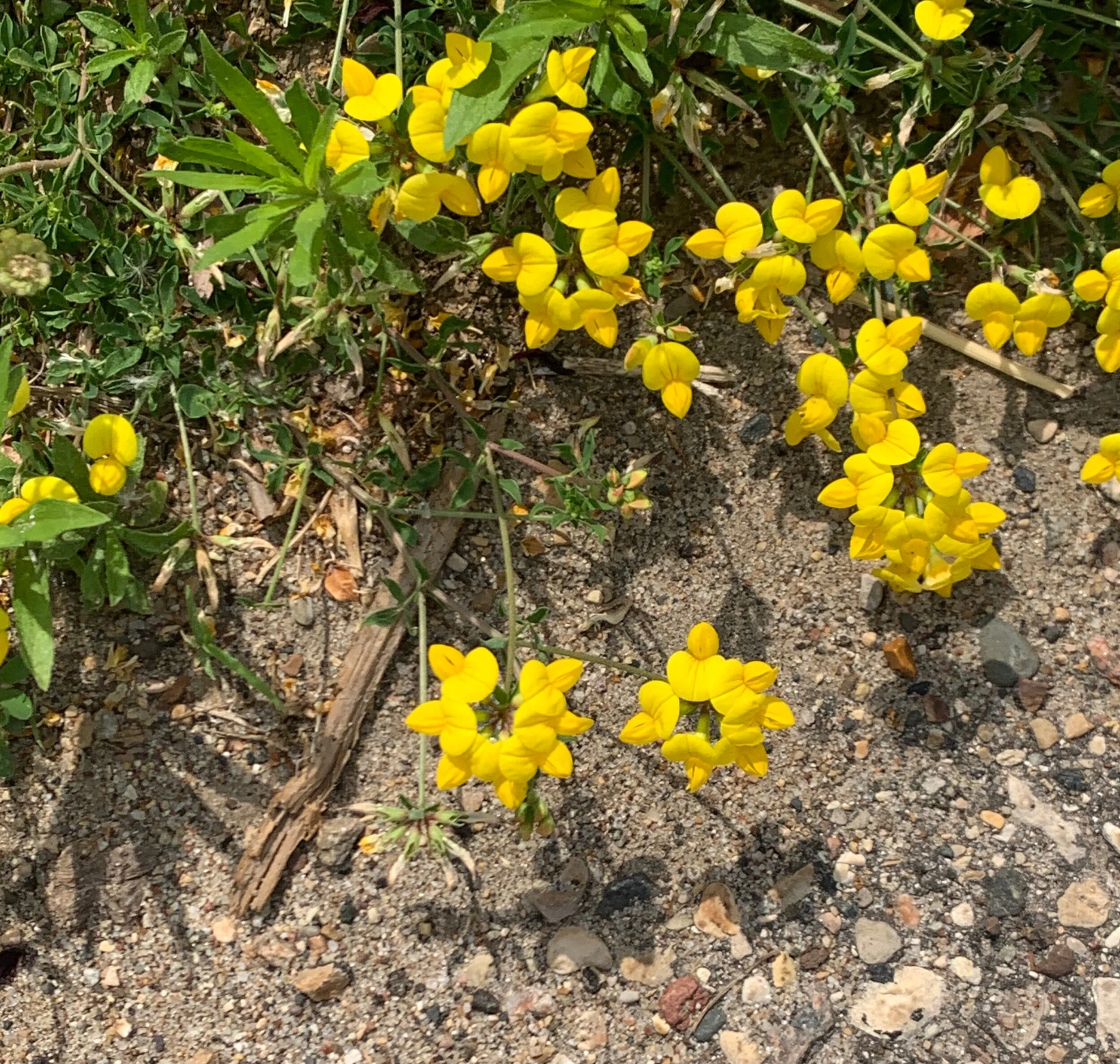
Birdsfoot Trefoil smiling for my iPhone.